Espoo Museum of Modern Art
Mobile Guide to the Draped – Art of Printed Fabrics Exhibition
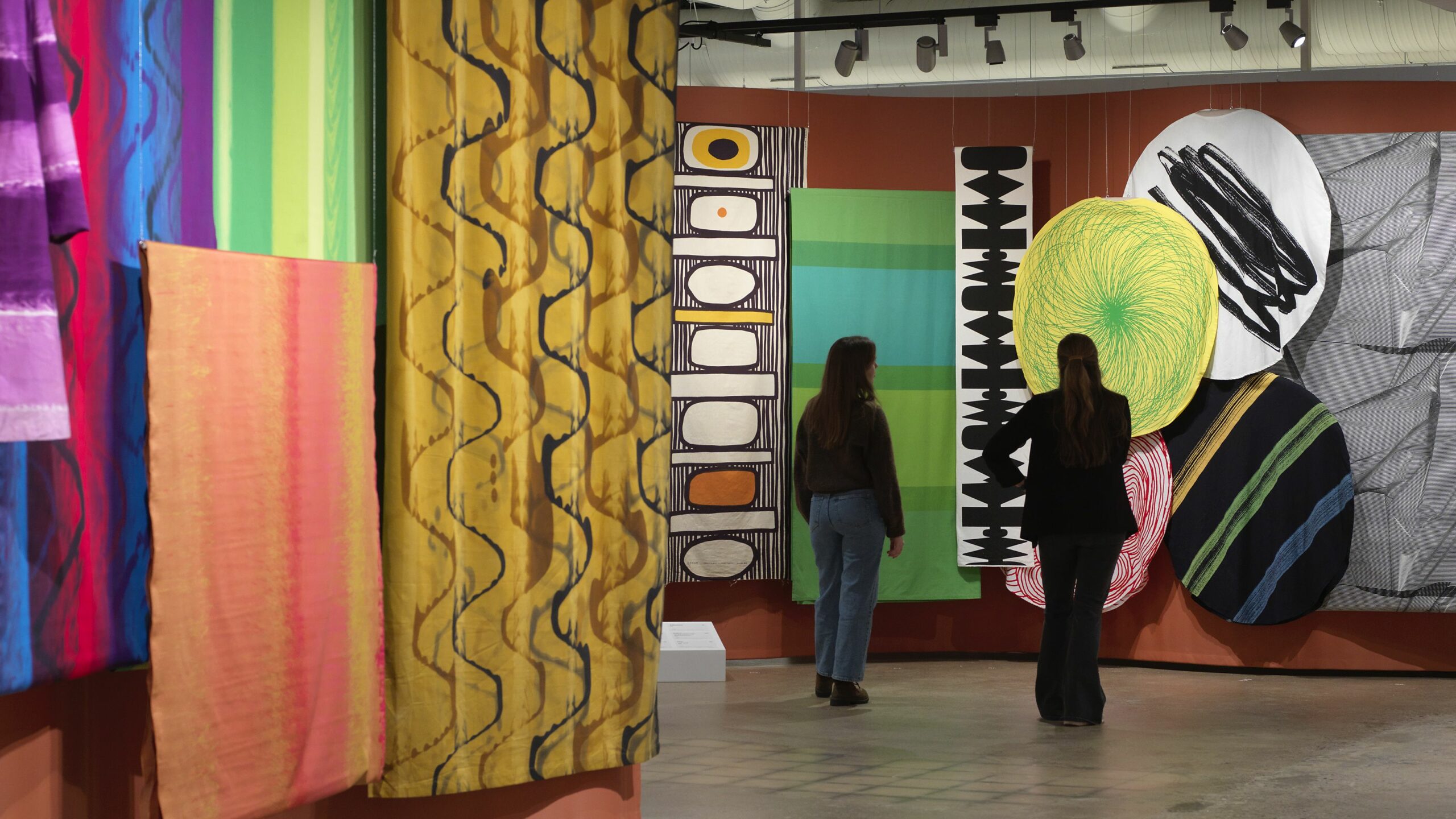
Draped is an exhibition dedicated to printed fabrics – an artform that drapes our homes, bodies, and memories. Patterns and colour combinations arranged on fabric intertwine with our lives. They serve to touch, communicate, convey, remember, and remind. Through them, we create identities and individuality, along with comfort and a sense of belonging.
Printed fabric plays a central role in the history, present day, and future of Finnish design. The exhibition showcases printed fabrics by 31 designers, spanning from the 1930s to today. Familiar patterns are viewed from an artistic perspective, with a special focus on the 1950s to 1990s, a period when fabric design in Finland expanded and began gaining international acclaim.
Alongside beloved classics, the exhibition also features textiles from lesser-known yet extraordinary designers. Both hand-printed and industrially produced fabrics are showcased, blending artistic expression with technical innovation. Additionally, Draped presents works by contemporary artists and pieces from Aalto University’s New Landscapes in Textile Design project.
About the Methods And Techniques
Ambiente Technique
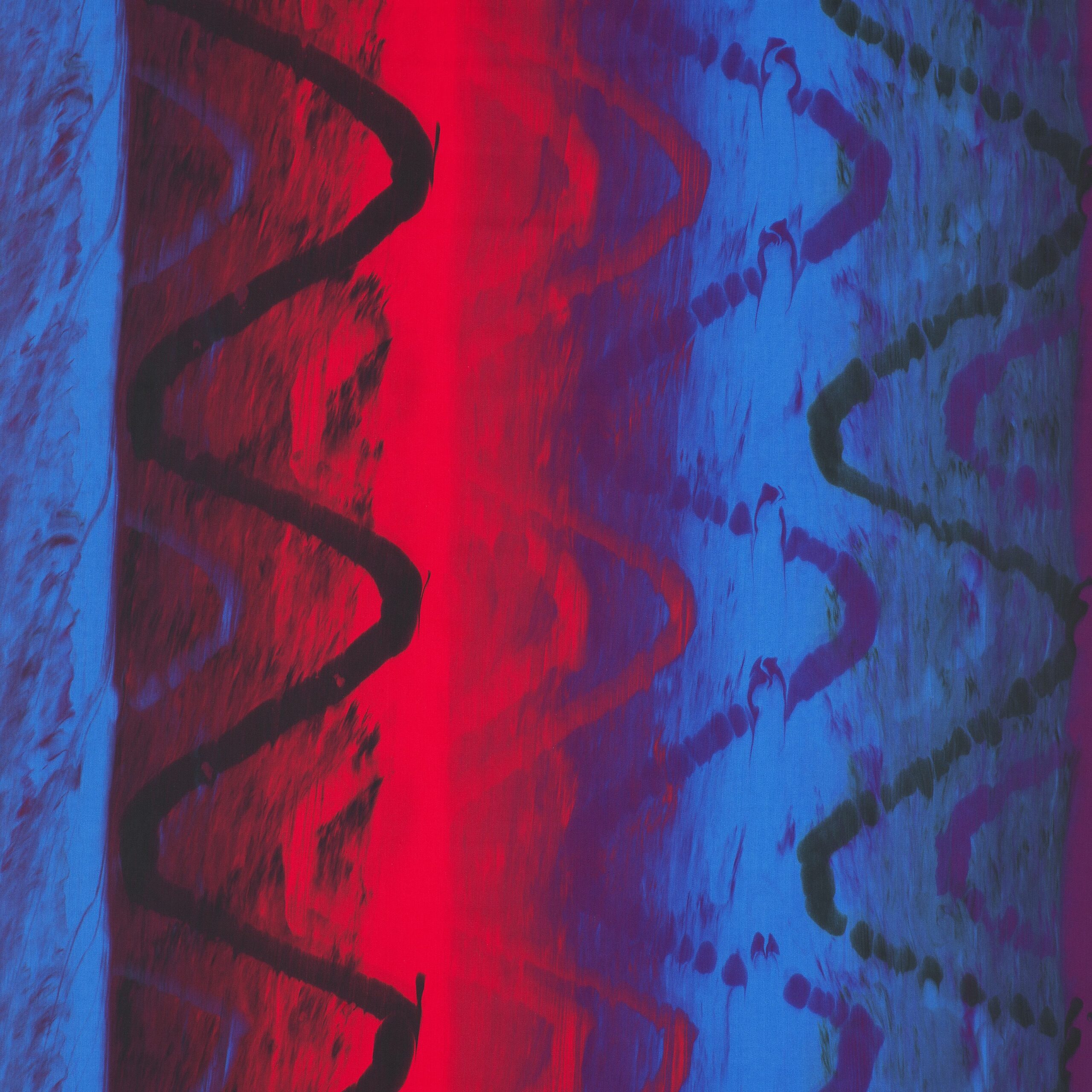
The Ambiente technique and collection were developed in the 1960s when Timo Sarpaneva pioneered new printing methods. The idea originated from a malfunctioning printing machine that splattered colours uncontrollably. Ambiente wasn’t strictly printing but rather dyeing. Additional devices were attached to the printing machine to distribute the colours like a painting. The result was always unique, even though the fabrics were based on specific patterns. This was made possible by the use of strong reactive dyes that penetrated the textile completely to dye both sides, ensuring durability against light and washing without fading.
Ambiente was developed at Tampella’s Lapinniemi factory but was also employed by the textile houses Finlayson-Forssa and Tikkurilan Silkki. Interior architect and fashion designer Pi Sarpaneva collaborated with Timo Sarpaneva from early on, designing ready-to-wear garments for Finn-Flare using Ambiente fabrics.
Unique Printed Fabrics
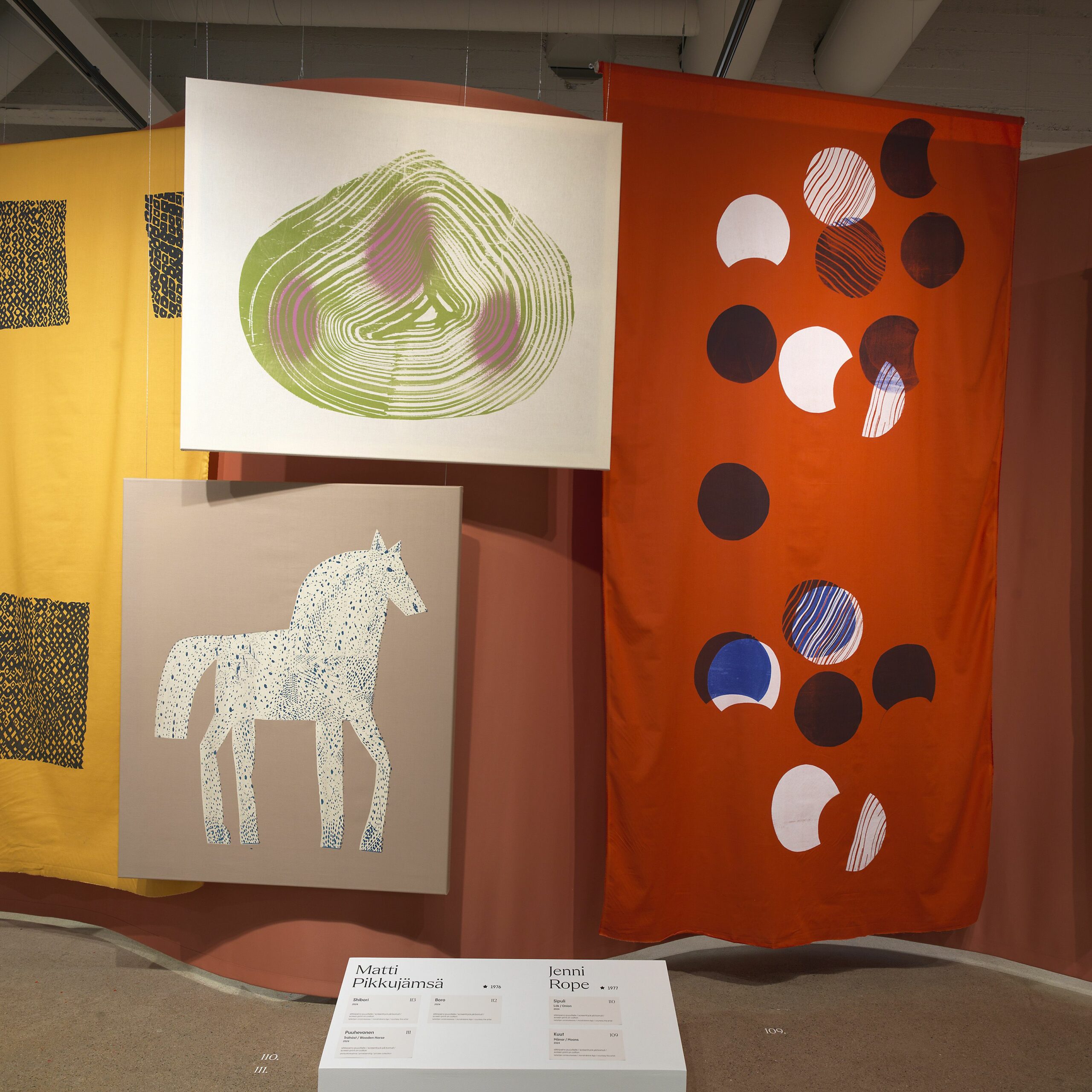
Matti Pikkujämsä and Jenni Rope’s unique printed fabrics were created using the serigraphy technique, also known as silkscreen printing technique, commonly used in fine art printmaking. These fabrics were produced for joint exhibitions in 2024, where the artists approached print design as artistic expression. In their process, they allowed the printing technique and the insights gained during production to shape their creative vision. The deliberate integration of imperfections in the serigraphy printing, such as shifts in patterns or uneven colour application, resulted in random and distinctive shapes on the fabric. Pikkujämsä’s works are also titled in reference to Japanese textiles: Boro signifies traditional patchwork textiles, while Shibori refers to a dyeing technique.
New Landscapes in Textile Design
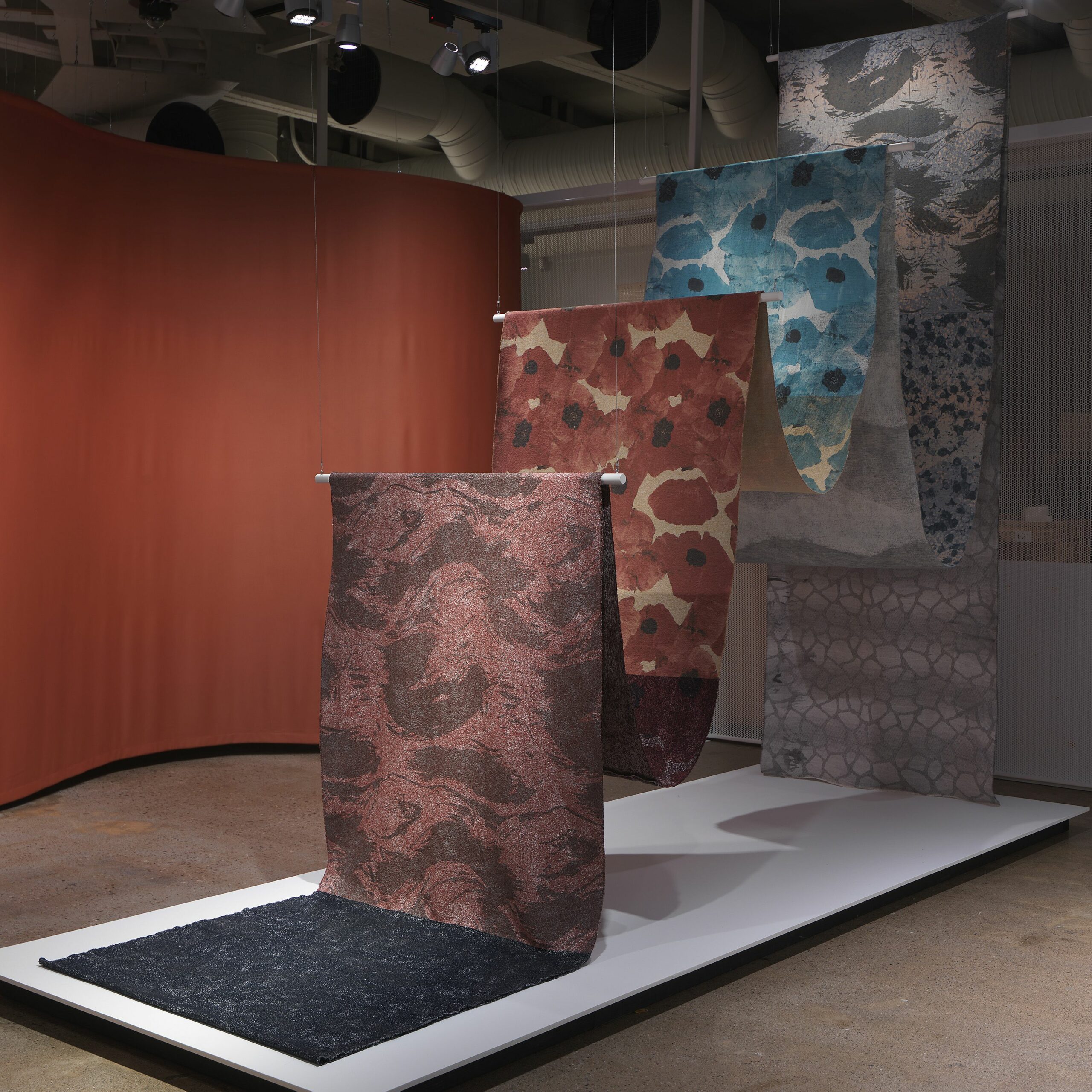
Fabrics combining printing methods and jacquard weaving were developed in Aalto University’s New Landscapes in Textile Design project, which aimed to explore design-driven ways to reduce the environmental impact of the textile industry. The project explored the repurposing of surplus materials and printing over a patterned jacquard fabric alongside the use of digital tools, such as artificial intelligence. The fabrics were woven from surplus yarns using Aalto University’s jacquard loom. The random colours of the yarns and AI-generated landscape-inspired imagery formed the basis for the designs. The patterns were further developed both by hand using flatbed screen printing and through an industrial digital printing process.
The jacquard loom, invented by the French Joseph Marie Jacquard in the 19th century used punched cards to create repeating patterns. The simple punched card includes the weave’s information. The method inspired English mathematician Ada Lovelace, regarded as the first computer programmer and a pioneer of artificial intelligence. In today’s jacquard looms, the punched cards are replaced by computer-aided digital tools. Aalto University’s team revisited the roots of jacquard weaving by integrating AI, a new tool, into the design process.
Traditionally, jacquard has not been used for printed fabrics due to its technical complexity. In jacquard weaving, the colour palette is created by varying the yarns. Excess yarns can be minimised by extending the pattern with digital pigment printing, which is more environmentally friendly than traditional dyeing methods.
Tibet Fabric
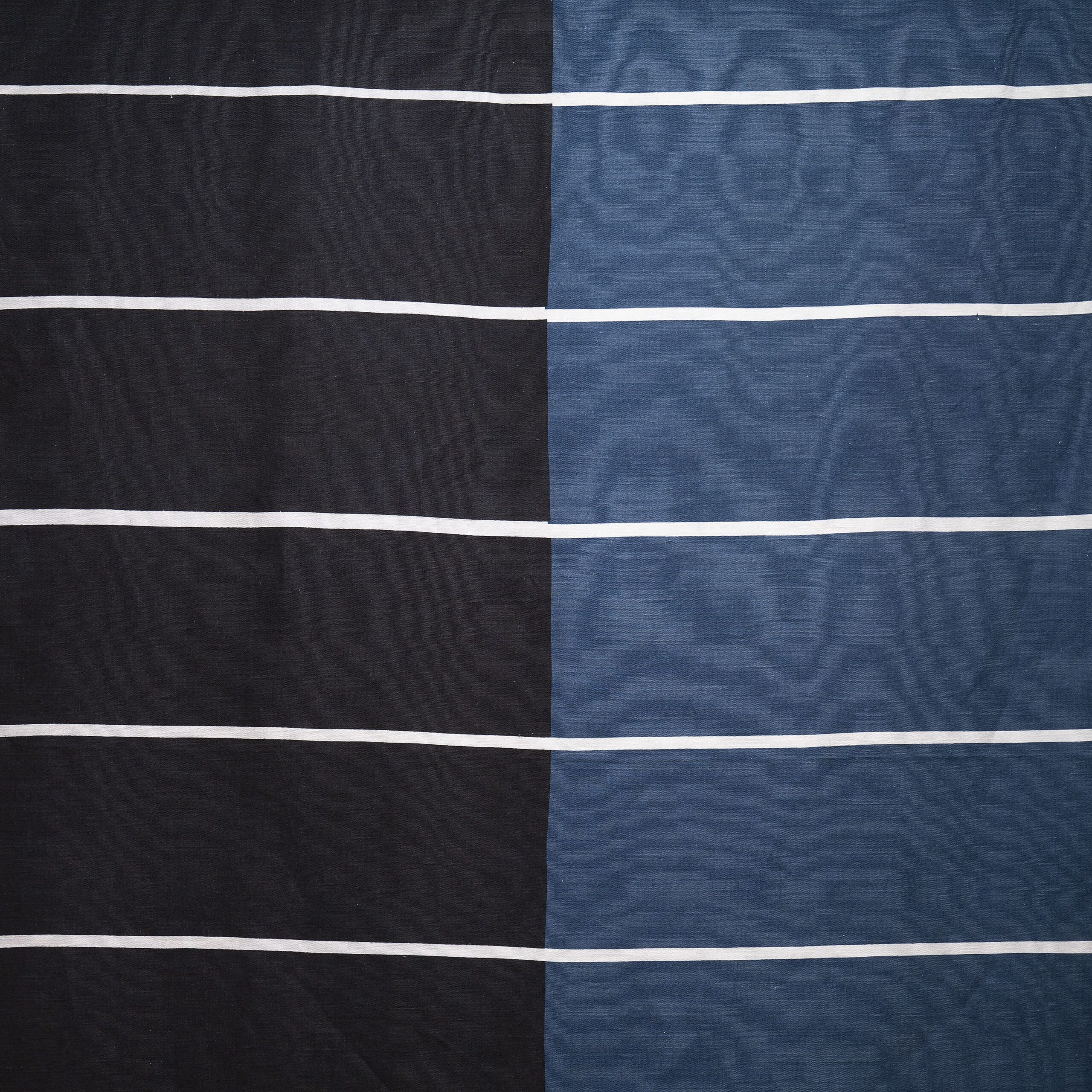
In 1952, Marimekko director Armi Ratia gave Vuokko Nurmesniemi a sample of Viola Gråsten’s highly popular Oomph fabric and requested a similar design. Straying from the instructions, and out of respect for both the other designer and her own vision, Nurmesniemi presented Ratia with the distinctly different Tibet fabric.
Printex, Marimekko’s trusted fabric manufacturer, printed the fabrics by hand using a film printing technique. This manual process resulted in slight irregularities where the patterns met. Nurmesniemi ingeniously incorporated these imperfections by making the edges of the colour blocks and unprinted areas integral to the design. Ratia was so impressed with Tibet that Nurmesniemi was granted creative freedom for years. Tibet also became the foundation for Nurmesniemi’s signature style, often characterised by abstract colour fields.
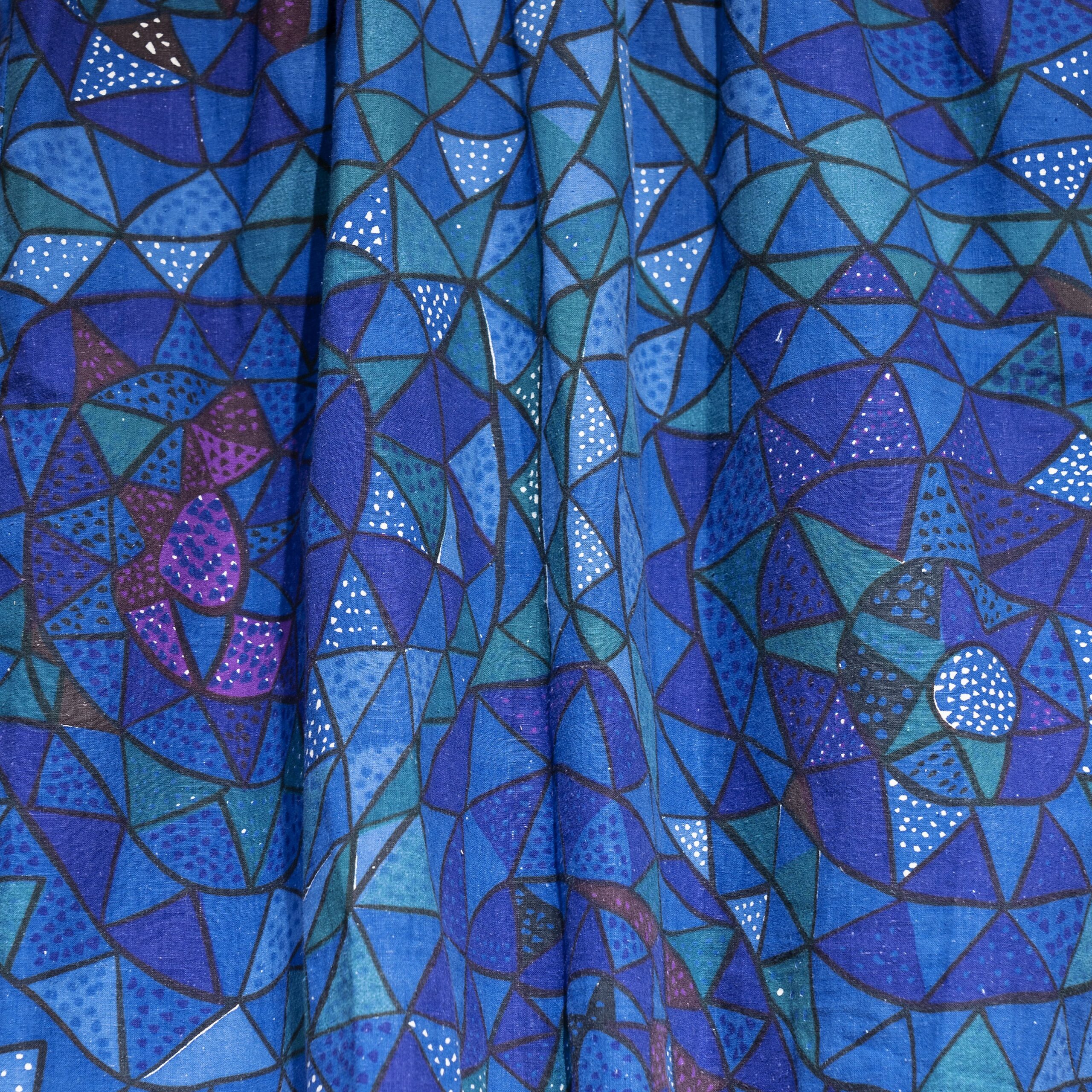
About the Artists
Jalmari Aarnio and Eero Rislakki

Jalmari Aarnio (b.1922 Helsinki, d. 1985 Helsinki) & Eero Rislakki (b. 1924 Helsinki, d. 2017 Sweden)
Jalmari Aarnio and Eero Rislakki worked as a team for the textile printing company E. Helenius, designing patterns and developing the Fin-Helen brand, which focused on international markets, from 1967 onwards. Jalmari Aarnio was a photographer and advertising graphic designer. Eero Rislakki is particularly known as a designer for Kalevala Koru Oy and Mäntyharjun Lasi Oy. In addition, he designed textiles for Finlayson together with his wife, Yvonne Rislakki. Aarnio and Rislakki took an experimental approach to textile print design, utilizing photography and collage techniques. Designer Kaj Blomqvist was also part of the Fin-Helen team, but the division of work between the artists remains unclear.
Aino Marsio-Aalto
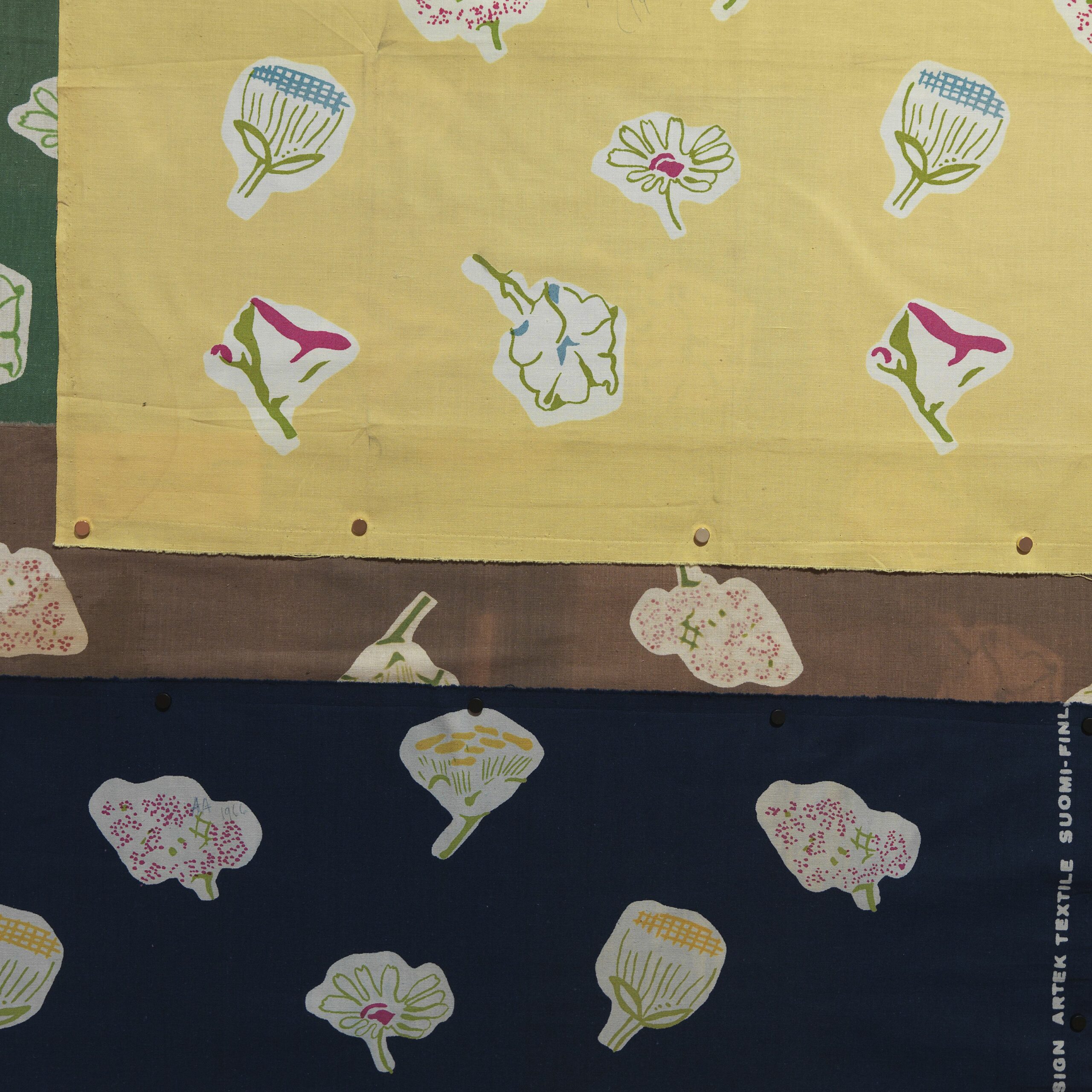
Aino Marsio-Aalto (b. 1894 Helsinki, d. 1949 Helsinki)
Architect and designer Aino Marsio-Aalto was a pioneer of Finnish printed fabric design. In the late 1930s, she served as the first design director at Artek, creating woven and printed fabrics inspired by natural forms. These textiles were manufactured by Yhdistyneet Villatehtaat in Hyvinkää and were first showcased at the Triennale Milano in 1936.
Rut Bryk
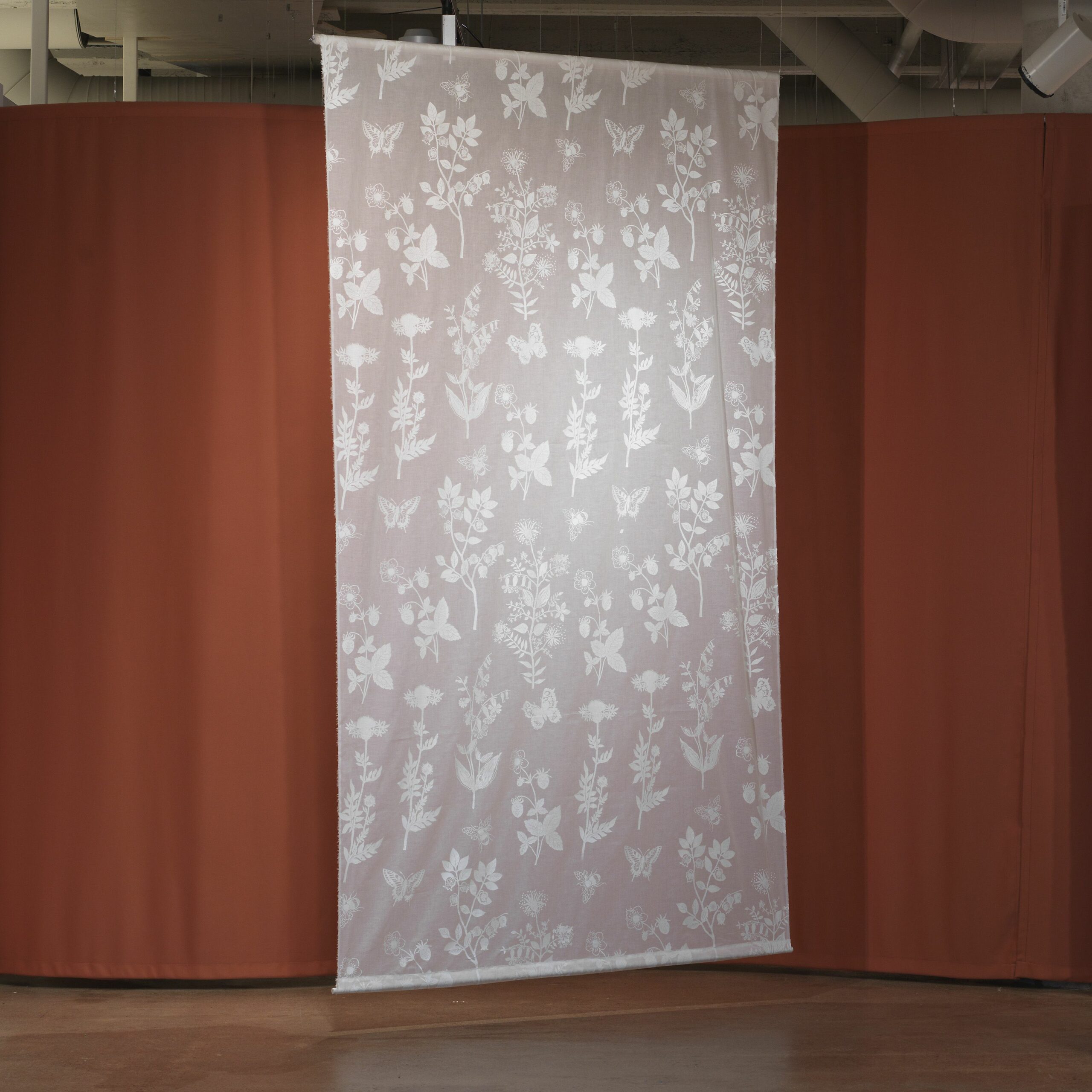
Rut Bryk (b. 1916 Stockholm, d. 1999 Helsinki)
Rut Bryk encountered printed textiles during her studies at Helsinki’s School of Art and Design, where she attended fabric printing courses. As a graphic designer, she gravitated towards linocut printing, a technique she employed in the early 1940s to create numerous lino-printed fabrics showcased in applied arts exhibitions in Finland and Sweden. Later, Bryk transitioned to ceramics, becoming one of Finland’s most significant ceramic artists. Her broader body of work can be explored at the Bryk & Wirkkala Visible Storage, including woven Seita fabrics designed from 1960 onwards and produced by Vaasan Puuvilla and Finlayson.
Dive into the background of Bryk’s lino-printed textiles in a short documentary published on EMMA Zone.
Viola Gråsten
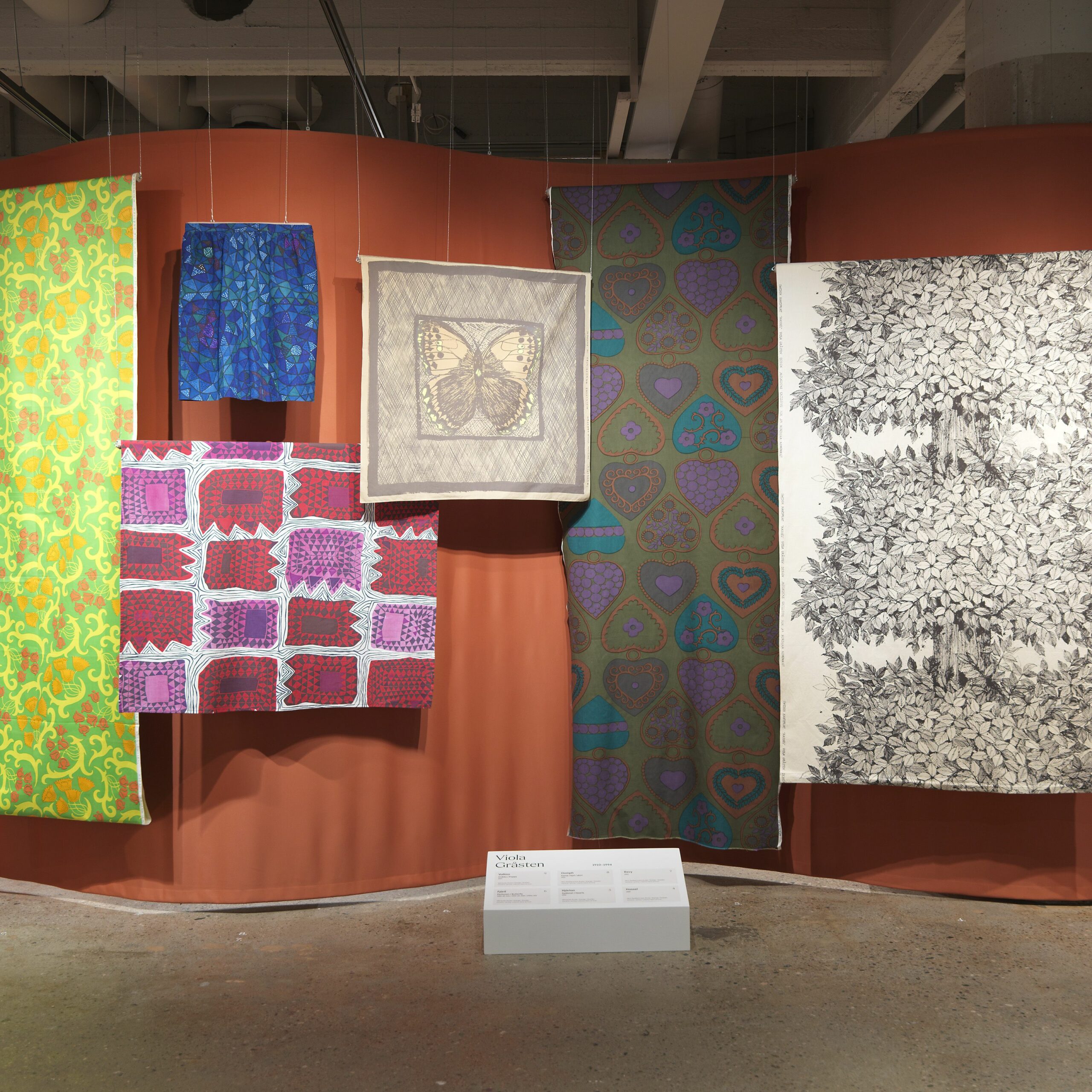
Viola Gråsten (née Forsberg, later Gråsten-Öhquist, b. 1910 Keuruu, d. 1994 Stockholm)
Finnish-born Viola Gråsten was one of the most influential textile artists in mid-20th century Sweden. Having moved to Sweden during World War II, Gråsten became a trailblazer in textile design, known for her bold colour combinations and patterns. She gained prominence for her work at the NK (Nordiska Kompaniet) department store’s textile division, where she designed rya rugs, printed fabrics, and illustrations.
Pirkko Hammarberg
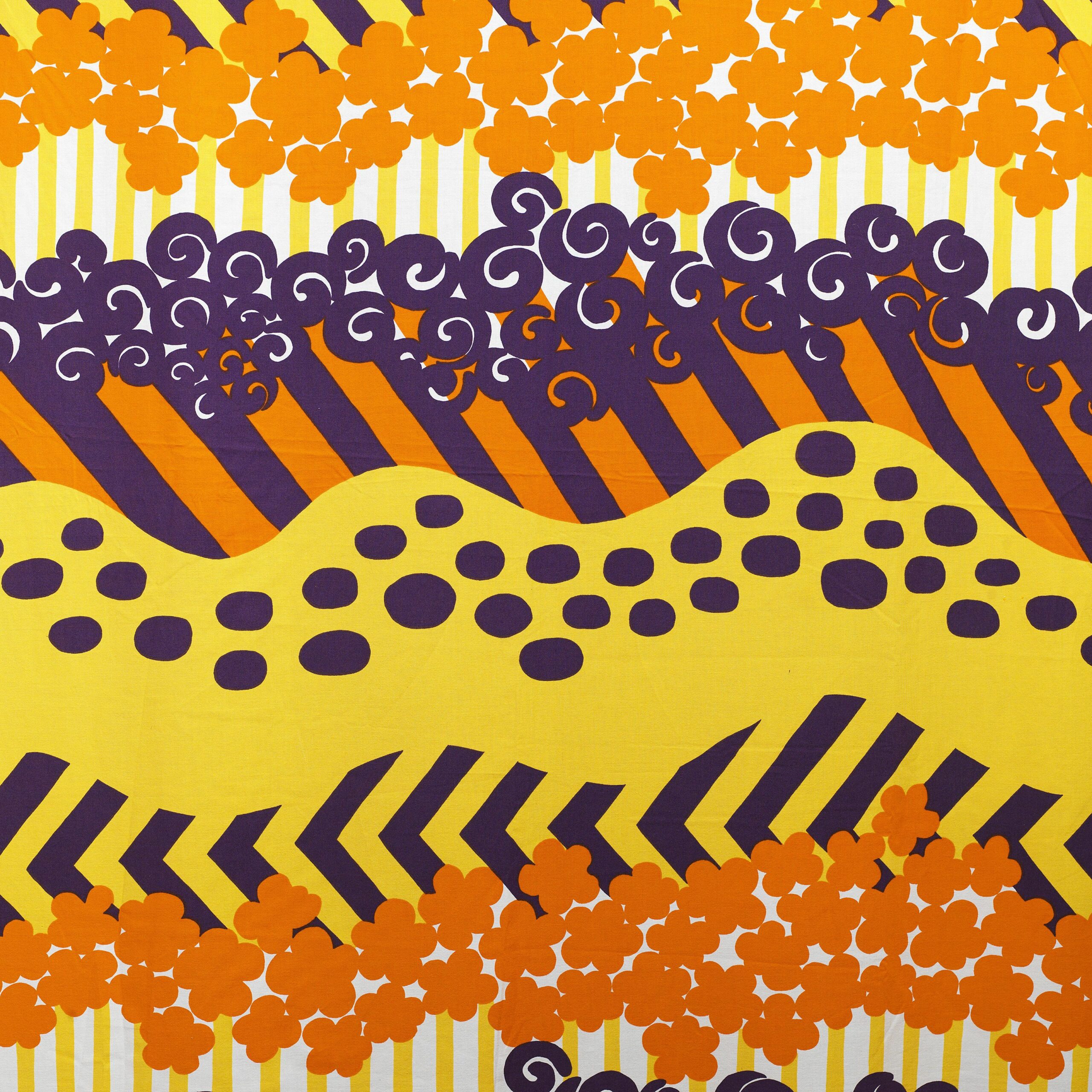
Pirkko Hammarberg (née Naukkarinen, b. 1932 Tohmajärvi, d. 2018 Forssa)
Textile artist Pirkko Hammarberg studied graphic design at Helsinki’s School of Art and Design, the influence of which is evident in the graphic forms in her fabric print designs. She worked at Finlayson’s studio in Forssa from 1961 to 1974 before becoming a freelance artist. Alongside printed textiles, Hammarberg designed art textiles for public spaces.
Saara Hirvisalo
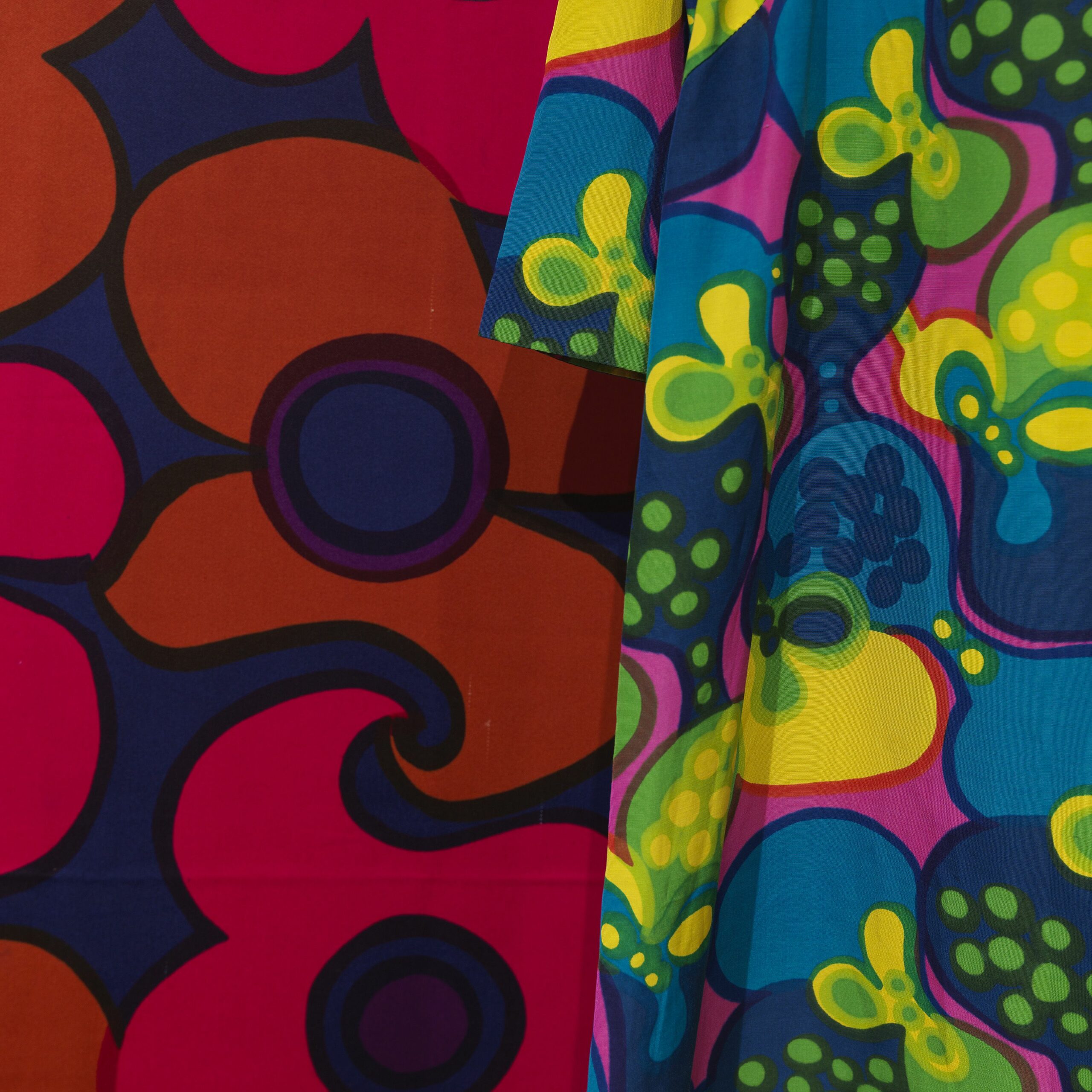
Saara Hirvisalo (b. 1937 Rovaniemi)
Textile artist Saara Hirvisalo has had a long career in designing functional textiles. She served as the chief artistic designer at Tikkurilan Silkki from 1965 to 1971, creating vibrant and striking fabrics for interior decoration and fashion. While Tikkurilan Silkki specialised in Jacquard fabrics, its collections also featured printed fabrics. In the 1970s, Hirvisalo became a freelance designer.
Fujiwo Ishimoto
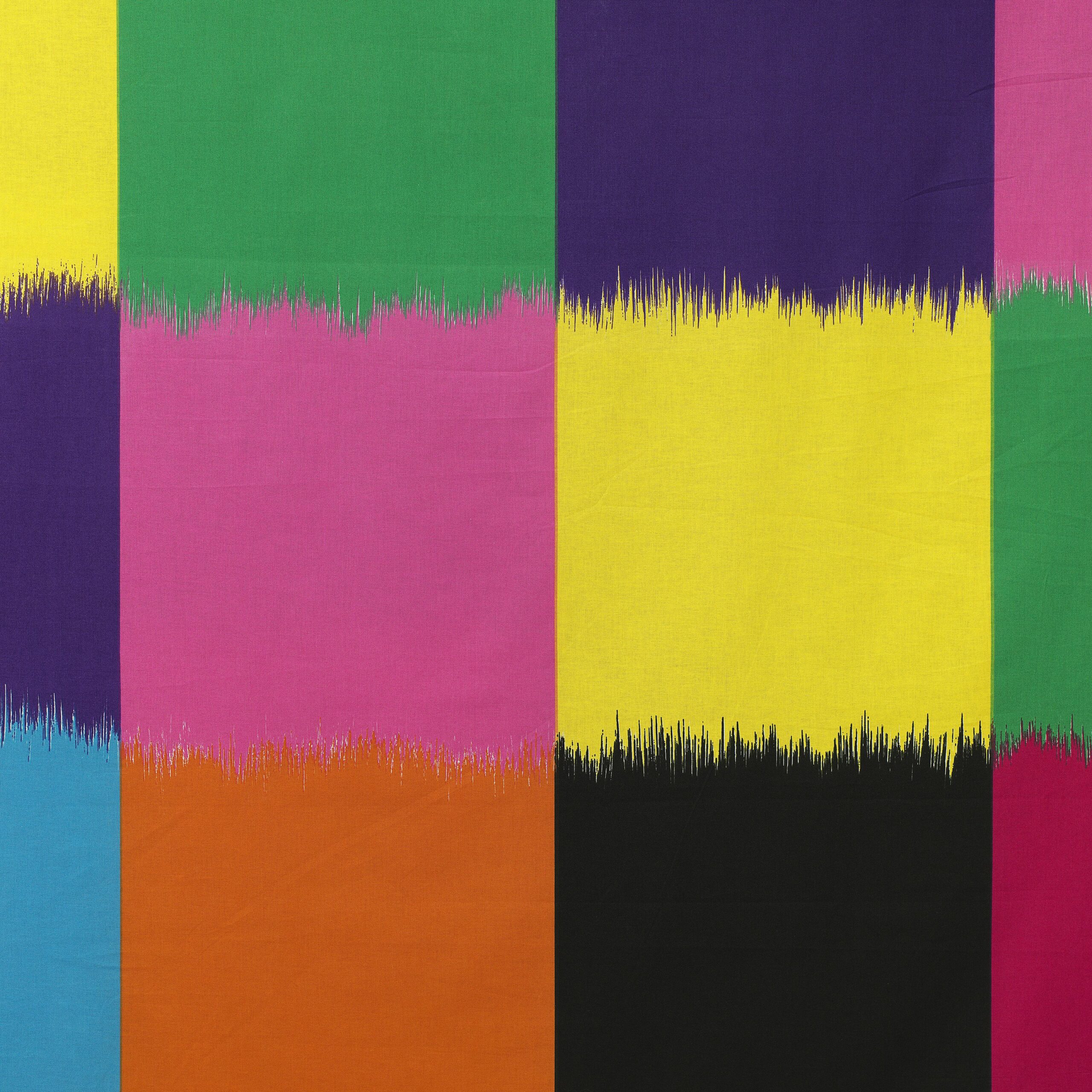
Fujiwo Ishimoto (b. 1941 Ehime, Japan)
Fujiwo Ishimoto moved to Finland from Japan in 1970, inspired by Finnish design and eager to work in printed fabrics. He began his career at Armi and Ristomatti Ratia’s Décembre design office and spent most of his career at Marimekko, designing around 400 printed fabric patterns between 1974 and 2006. Since the 1980s, Ishimoto has also worked with ceramics alongside his textile design.
Maija Isola
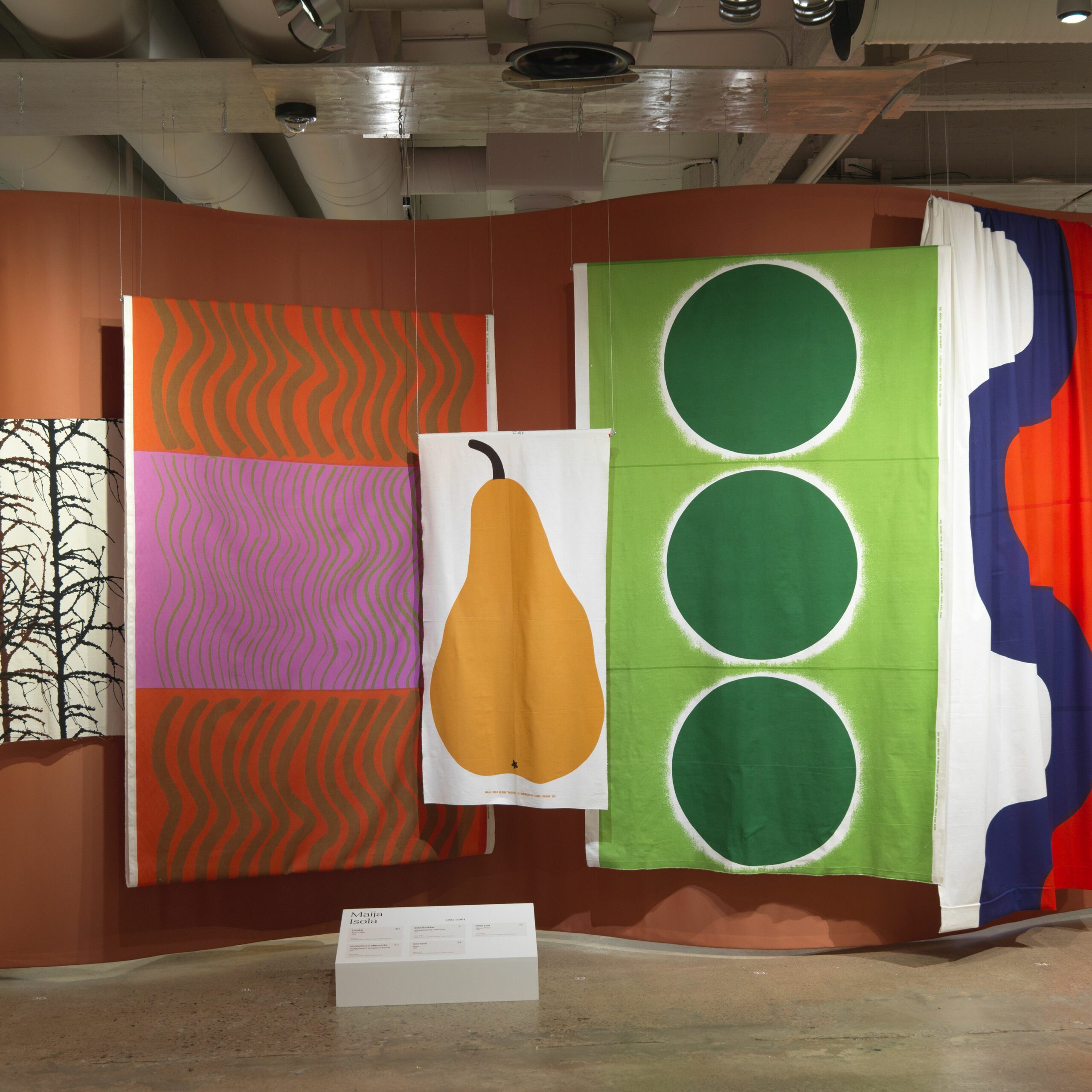
Maija Isola (née Leander, b. 1921 Riihimäki, d. 2001 Riihimäki)
Maija Isola was Marimekko’s interior textile designer from 1949 to 1987, creating over 500 printed fabric patterns, including some of the brand’s most iconic designs, such as Unikko. Some of her large-scale patterns were created during late evenings in Marimekko’s workspace after the factory doors had closed. Isola would listen to music and “dance with a brush,” as she described it. Alongside her design work, Isola was a painter who lived abroad for extended periods, drawing inspiration from various cultures, folklore, and nature.
Maija Lavonen

Maija Lavonen (née Luukela, b. 1931 Ii, d. 2023 Helsinki)
Maija Lavonen was a pioneer at the intersection of art and design. She began her career in garment design and managed her own company, Poppi Boutique, from 1967 to 1969, selling her fabric and clothing designs. Lavonen created a collection of stripe patterns influenced by optical art, some of which Marimekko produced. She also undertook commissions for Tampella, Porin Puuvilla, and Finlayson. As an experimental textile artist, Lavonen incorporated screen-printed fabrics into laminated unique artworks she called Multiples.
Kaarina Kellomäki
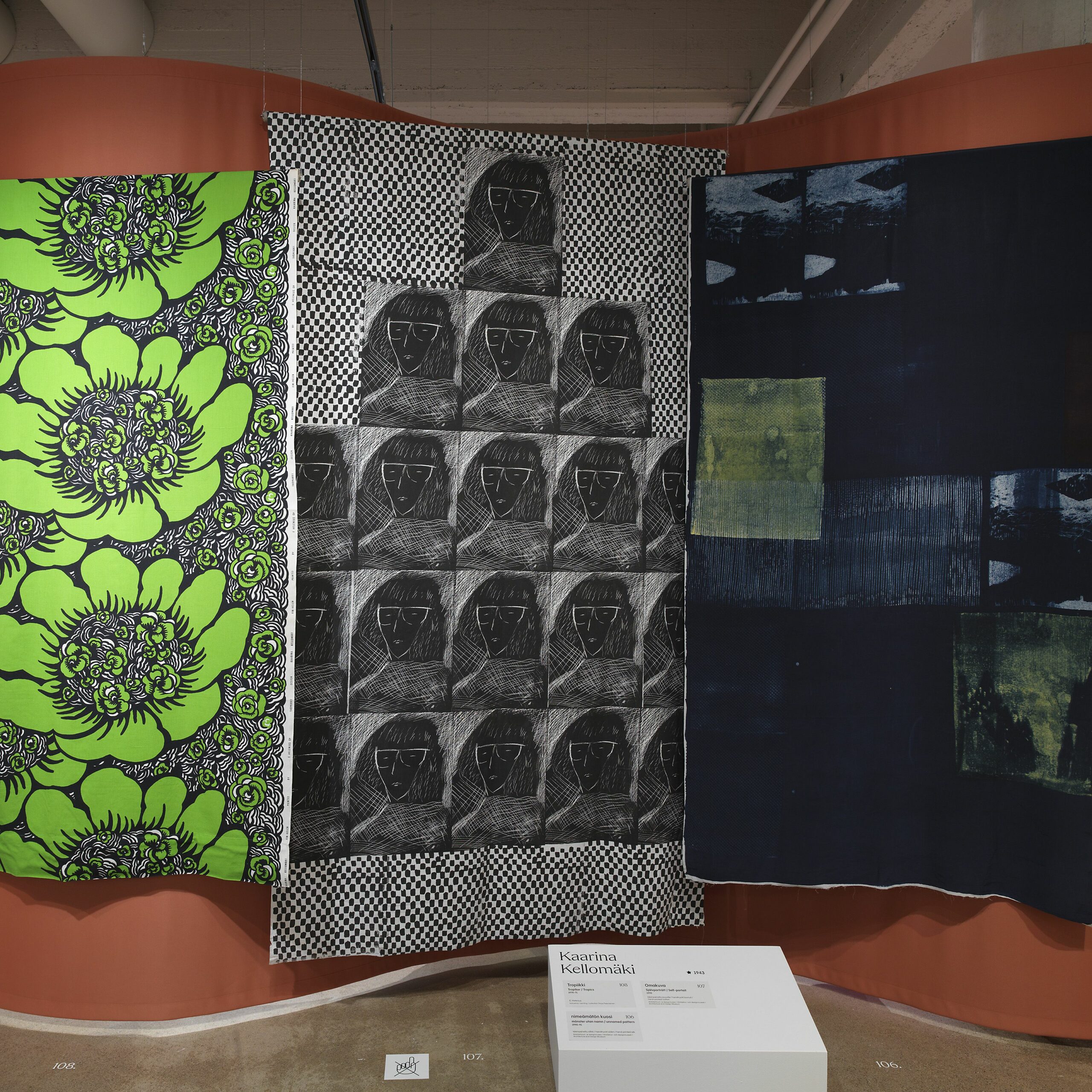
Kaarina Kellomäki (née Heikkilä, b. 1943 Vieremä)
Textile and environmental artist Kaarina Kellomäki had a significant career in printed fabrics. Early on, she worked at Marimekko for a year, followed by two decades as a prolific freelance designer internationally as well as in Finland for several clients, including E. Helenius and Finlayson. Kellomäki also taught printed fabric design at the University of Art and Design Helsinki for several decades.
Raili Konttinen and Juhani Konttinen
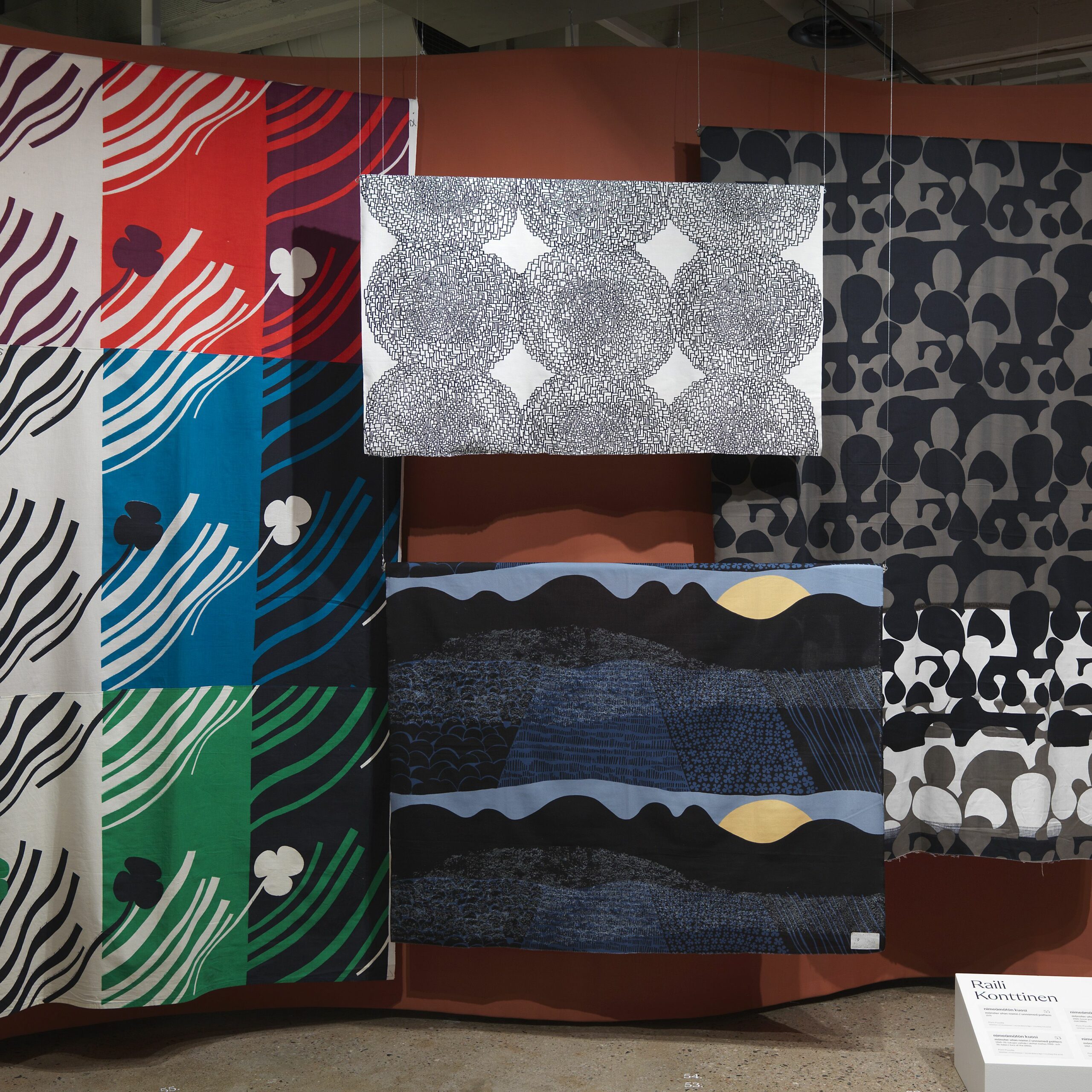
Raili Konttinen (née Hannila, b. 1932 Somero) and Juhani Konttinen (b. 1934 Kuopio, d. 2003 Vaskijärvi)
Designer couple Raili and Juhani Konttinen worked together for several decades. Raili started at Porin Puuvilla in 1955, and Juhani joined the following year. They were the textile company’s longest-serving designers, both transferring to Finlayson-Forssa in the mid-1970s as a result of a merger. In 1981, they founded their own design company, Raili and Jussi Konttinen Design, and moved to Helsinki. “Our life and work became one indivisible whole,” Juhani has stated.
Raili focused primarily on designing printed fabrics, with its many stages and experiments. Juhani also worked as a graphic designer, photographer, and exhibition designer. Both sought design inspiration from contemporary phenomena in art and culture, as well as from folk culture.
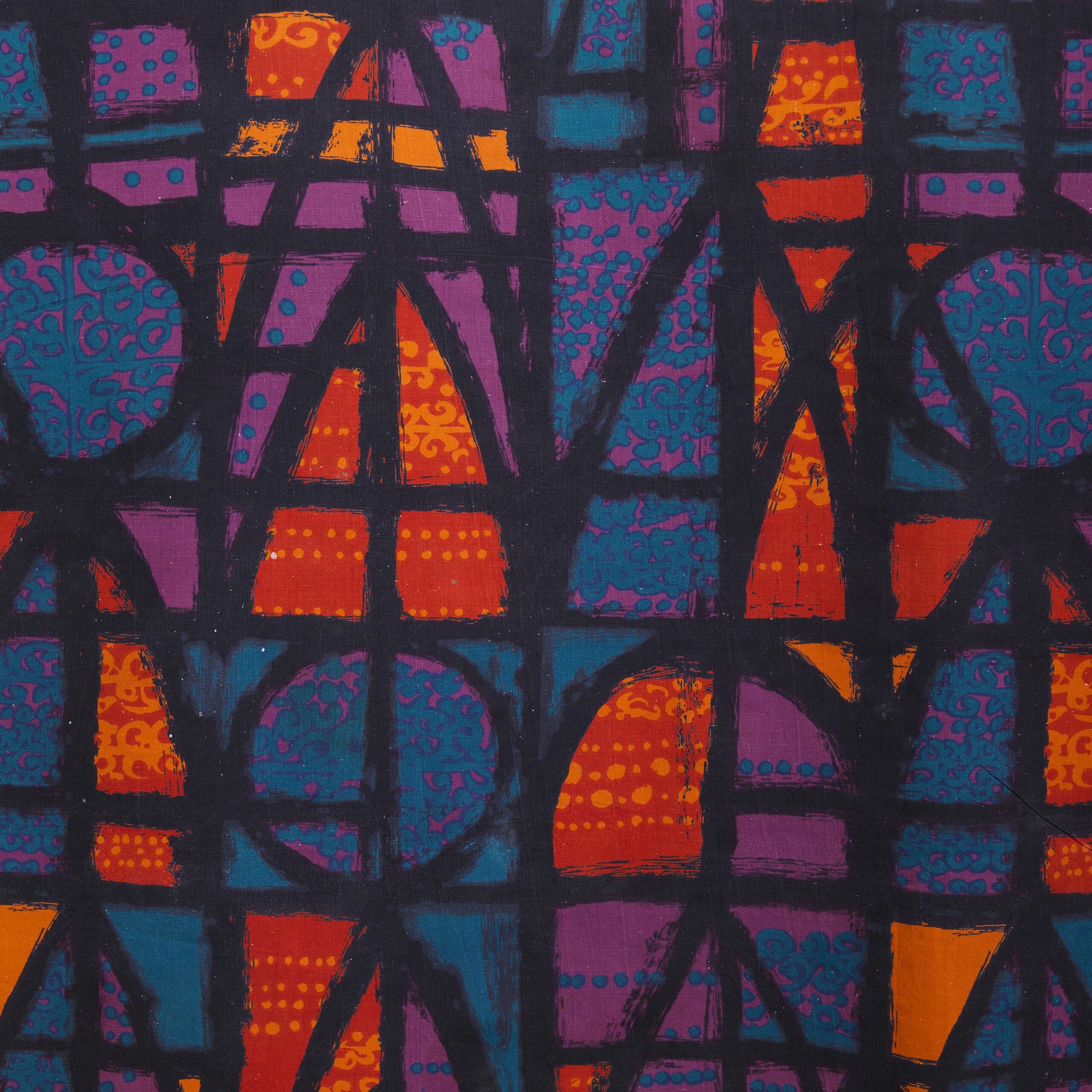
Marjatta Metsovaara
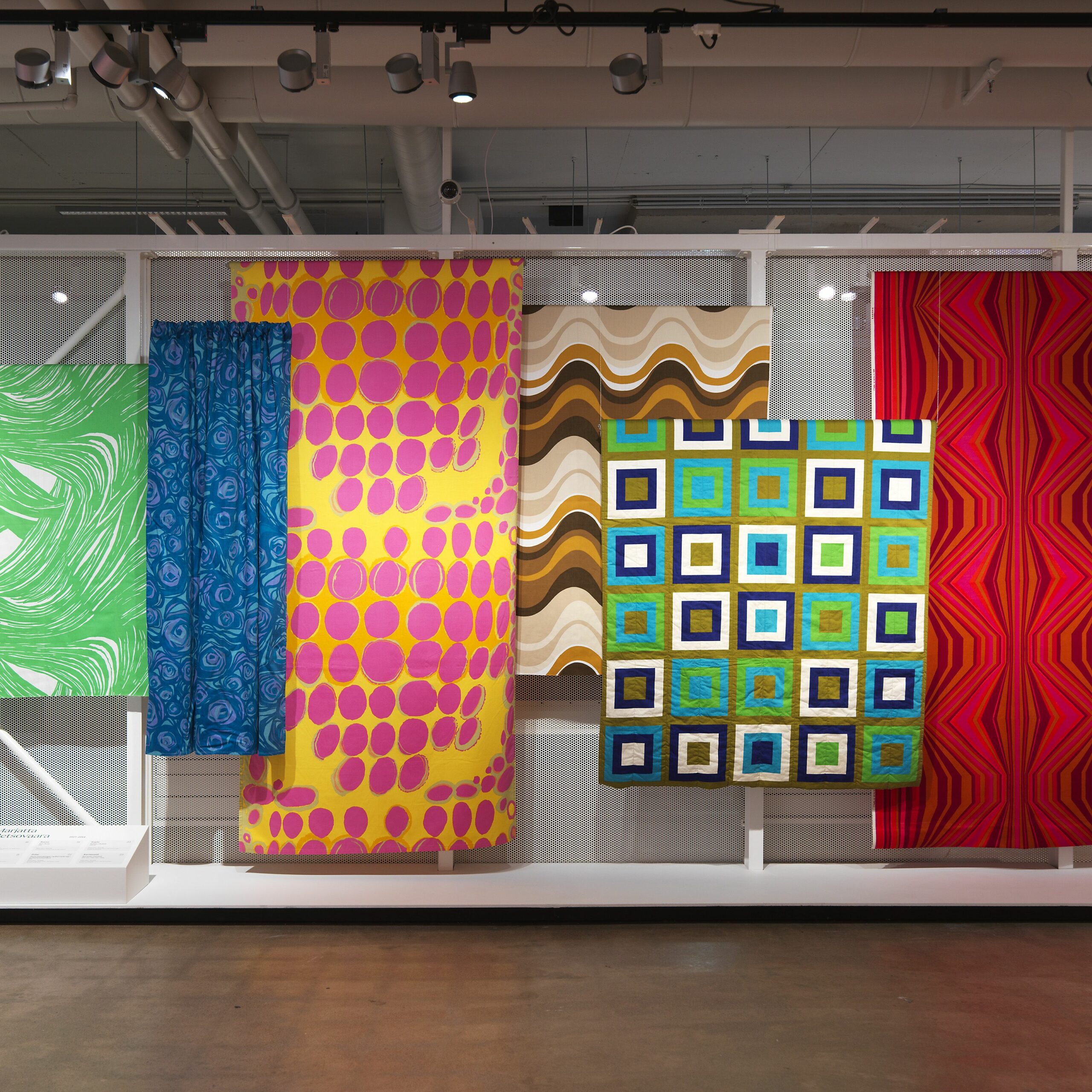
Marjatta Metsovaara (b. 1927 Turku, d. 2014 Cittanova, Italy)
Marjatta Metsovaara founded Metsovaara in 1954, following in the footsteps of her family’s carpet weaving business. The curtains, carpets, and upholstery fabrics of Metsovaara and the company’s other designers reflected the spirit of the time. Metsovaara gained international acclaim in the 1950s and 60s. She had the ability to combine artistically ambitious design, technical experimentation, and commercial insight. She also designed art textiles and Jacquard fabrics in Belgium.
Vuokko Nurmesniemi
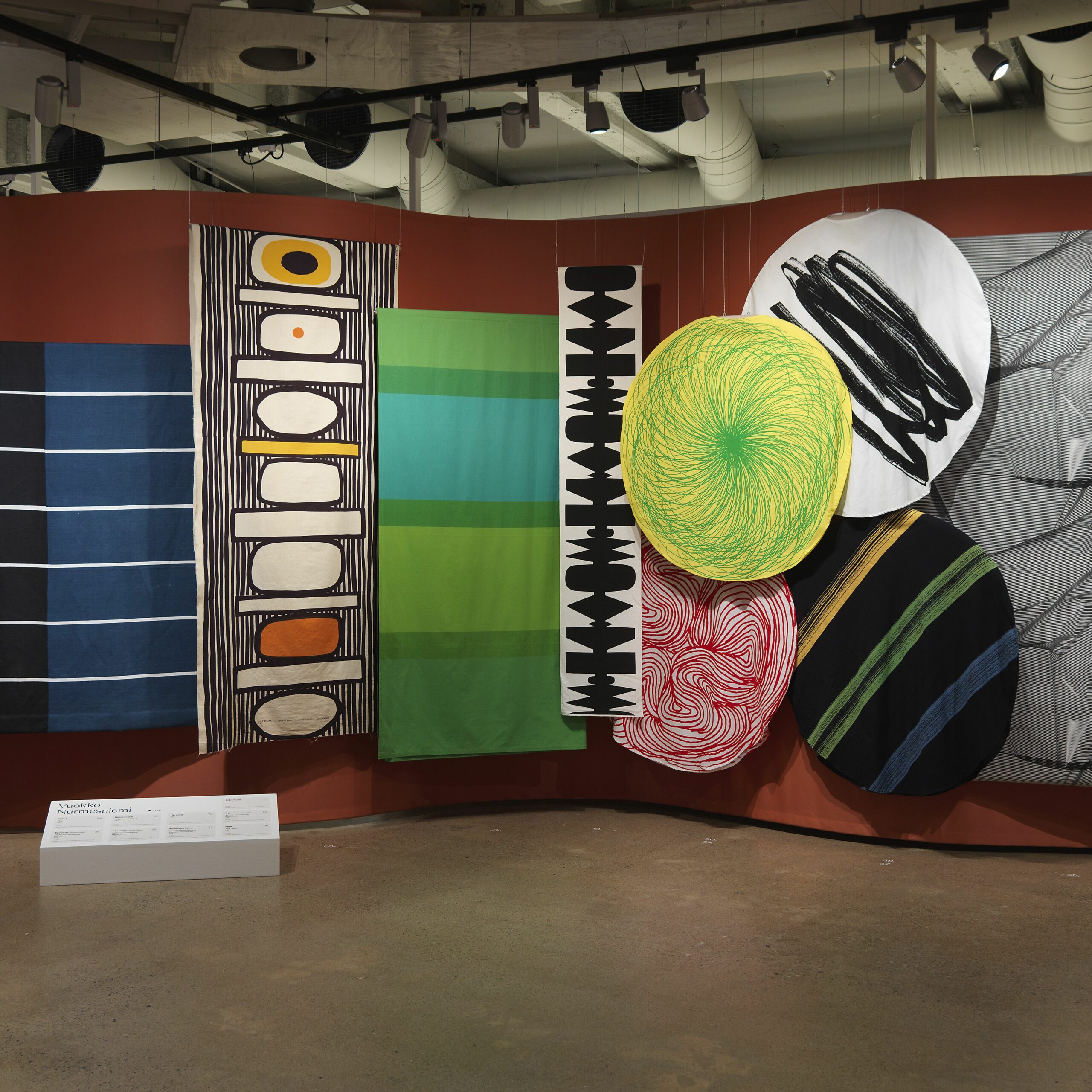
Vuokko Nurmesniemi (née Eskolin, b. 1930 Helsinki)
Vuokko Nurmenniemi’s creations are classics of Finnish design. Originally trained as a ceramicist, Nurmesniemi became the first designer at Marimekko and Printex at the request of Armi Ratia. Nurmesniemi’s influence on Marimekko’s visual identity is significant. Her impact was seen in the growing size of patterns on fabrics and the simplification of clothing designs. Her legacy lives on at Marimekko, for instance, in the Piccolo pattern and the Jokapoika shirt designed using it. In 1964, Nurmesniemi founded her Vuokko company, where she continued to develop her own expression. The company is still in operation today and continues to use her extensive design archive in product development.
Matti Pikkujämsä
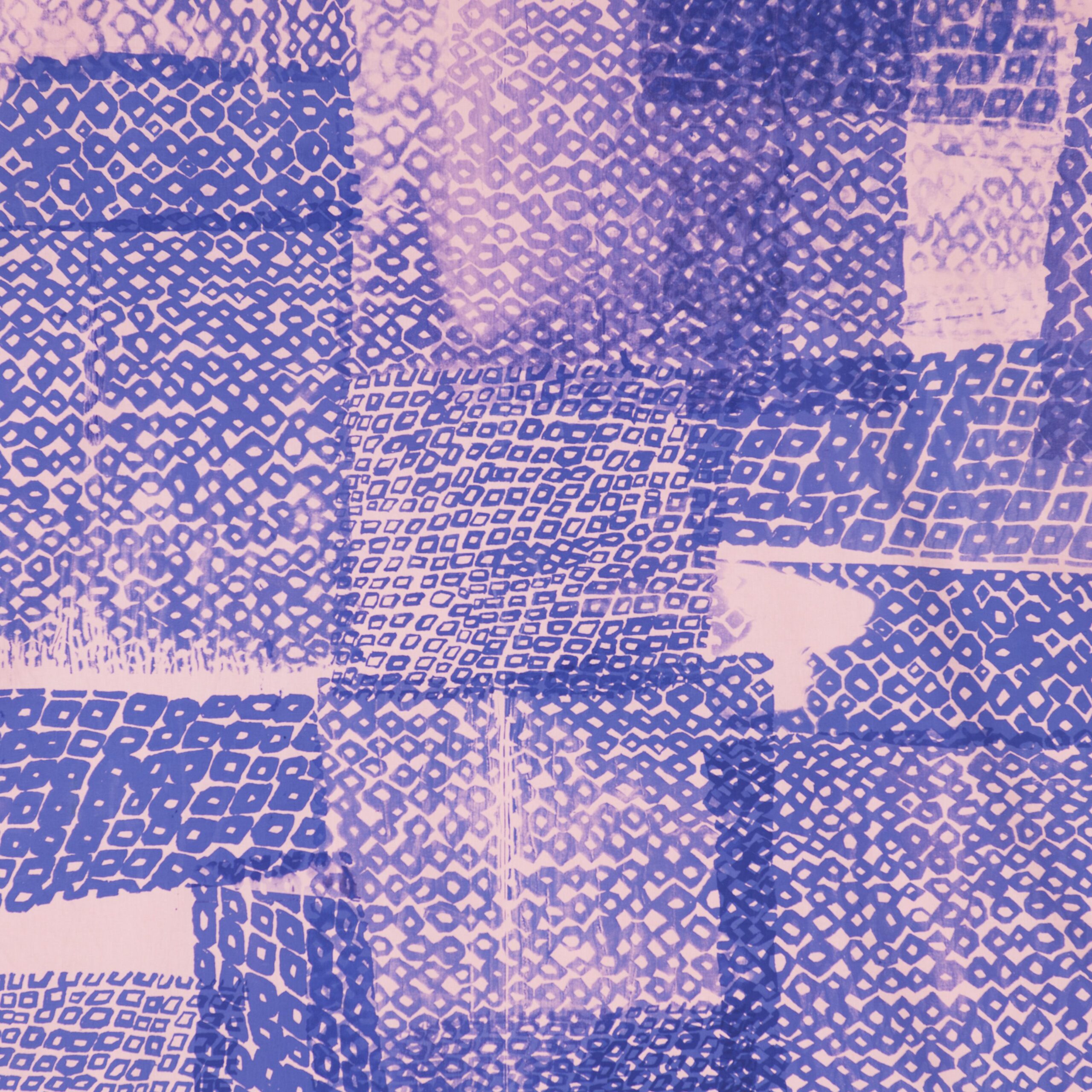
Matti Pikkujämsä (b. 1976 Oulu)
Award-winning illustrator Matti Pikkujämsä is known for his playful, colour-infused style, through which he captures people and the surrounding world in his art. In addition to his illustration work, Pikkujämsä also works with painting, graphic art, and textiles. He has designed textile prints for Lapuan Kankurit, Samuji, and Marimekko. Marimekko’s textiles have held a special meaning for him, as he has been collecting them since childhood. Pikkujämsä has collaborated on textile design with visual artist Jenni Rope and has also held joint exhibitions with her.
Markku Piri

Markku Piri (b. 1955 Kauhava)
Artist and designer Markku Piri has worked across a wide range of materials, but textiles have been the focus of his design work since he graduated in textile art. Piri was the last designer hired by Armi Ratia for Marimekko in 1981. Since then, Piri has designed patterns and collections for international brands, as well as Finnish textile companies such as Petritex (now Petrifun), Eurokangas, and Finlayson, where he had his own collection from 1984 to 1992.
Lena Rewell
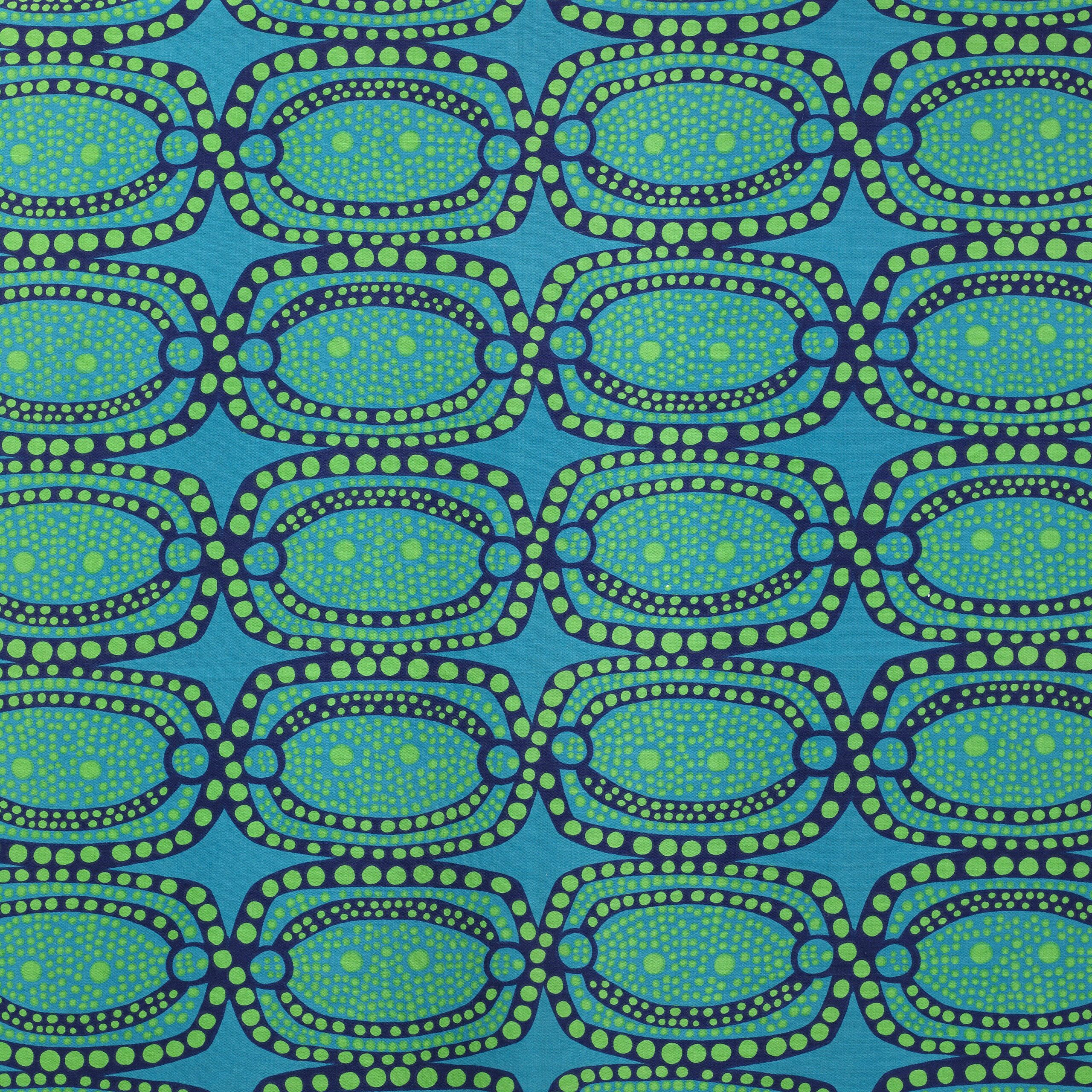
Lena Rewell (Rewell-Gripenberg, née Malmström, b. 1934 Turku)
Textile artist Lena Rewell was born into the world of yarns, as her father worked in the textile industry. Her deep understanding of materials is reflected in her work, which focuses on wool felt, accessories, and garments. Rewell is known for her bold and strong use of colour. In addition to running her own studio and weaving workshop, Rewell worked as a freelance designer for fabric factories. She designed printed fabrics for cotton and wood fibre in the 1960s and 70s. In the late 1960s, Rewell designed the Kimara collection for Suomen Vanutehdas, featuring disposable tablecloths made of wood fibre.
Jenni Rope
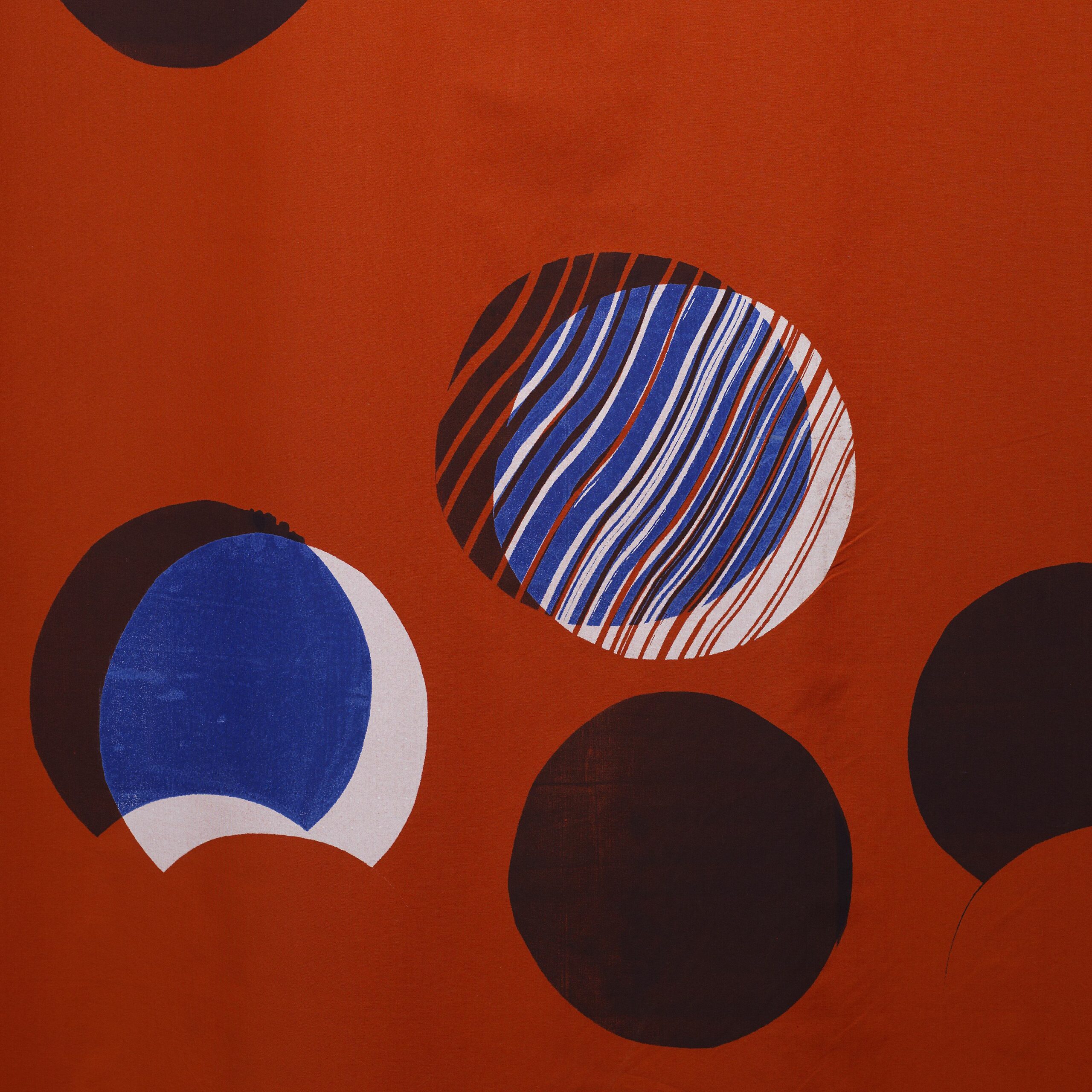
Jenni Rope (b. 1977 Lahti)
Jenni Rope works in the fields of visual art and design. She has created paintings, mobile sculptures, public artworks, and pattern designs. The unique hand-printed fabrics in the Draped exhibition combine fine art printmaking with the tradition of printed fabrics. She has also designed industrial printed fabrics, for example, for Marimekko and Vimma. Rope has collaborated with Matti Pikkujämsä on textile design and has held joint exhibitions with him.
Pi Sarpaneva and Timo Sarpaneva
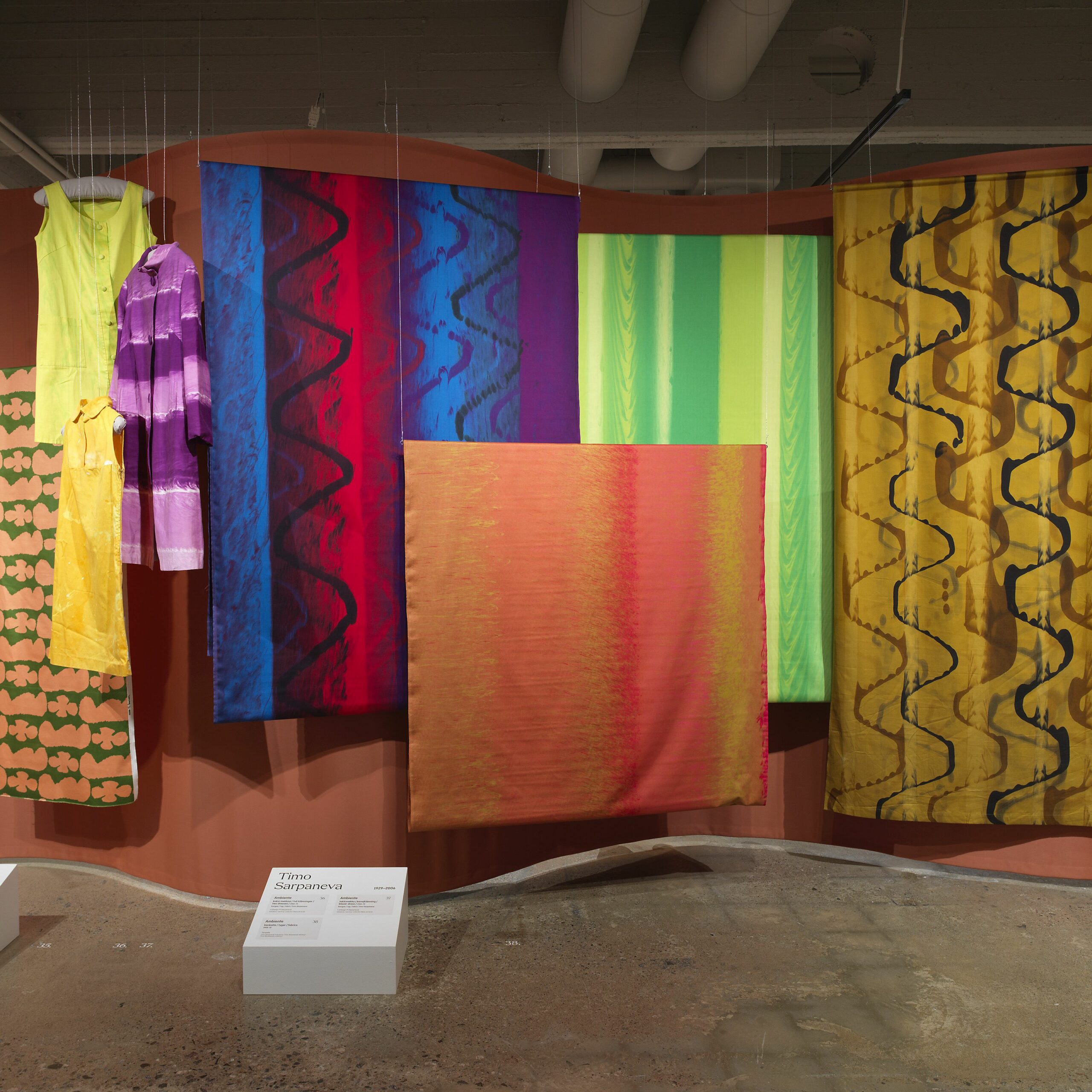
Pi (Ann-Mari) Sarpaneva (née Holmberg, b. 1933 Helsinki, d. 2019 Helsinki) and Timo Sarpaneva (b. 1929 Helsinki, d. 2006 Helsinki)
Pi Holmberg and Timo Sarpaneva met in 1953 at Helsinki’s School of Art and Design, where Pi was studying interior architecture and Timo was teaching textile printing. The couple was married from 1954 to 1970. They worked both independently and as a team in the textile industry, particularly during the 1950s and 1960s.
When they first met, Timo was already an acclaimed artist, having built a career in both glass design and textile design. Timo served as the artistic director of Porin Puuvilla from 1955 to 1966, but also worked as a freelance designer for other textile manufacturers. One of his most famous textile designs is the Ambiente fabric series created in the 1960s. Pi was deeply involved in the production of the experimental and modern Ambiente fabrics and designed clothing from them. Pi is recognised not only for her career as an interior architect but also as a clothing designer.
Howard Smith

Howard Smith (b. 1928 Moorestown, New Jersey, d. 2021 Fiskars)
American-born Howard Smith was a versatile artist and designer who lived and worked in Finland for most of his life. Smith was already a successful artist when he took on the responsibility for designing printed fabrics at the Vallilan Silkkitehdas factory in 1968 in Helsinki. He designed vibrant fabrics with large abstract patterns and stylised plant and flower motifs for the Vallila design house until the late 1970s.
Nana Suni
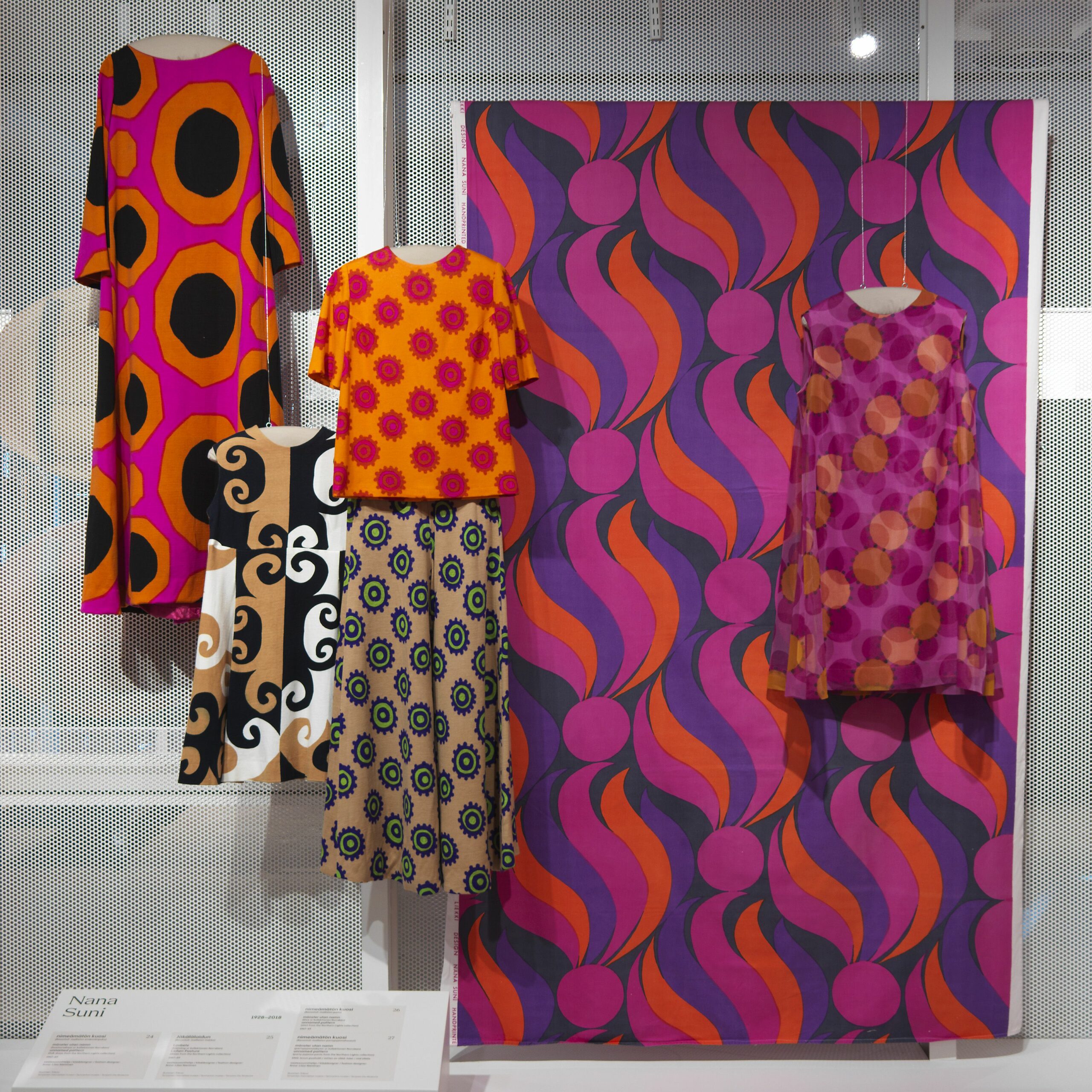
Nana (Anneli) Suni (b. 1928, d. 2018, locations unknown)
Textile and fashion designer Nana Suni designed printed fabrics, clothing, ryijy rugs, and even candles during her career. She contributed as a pattern and colour designer to the creation of the new export-focused Revontuli (Northern Lights) collection by the textile company Suomen Trikoo from 1966 to 1969. In addition to clothing from this collection, the Draped exhibition showcases printed fabrics designed by Suni for E. Helenius. As a freelance designer, Suni also had her own brand, Nana Suni Design, which included woollen throws, accessories, and clothing.
Eva Taimi

Eva Taimi (b. 1913 Helsinki, d. 1991 Helsinki)
Eva Taimi was one of the first textile artists employed by Finland’s printed fabric industry. A pioneer in fabric printing, she worked as an artist at the art dye works Helsingin Taidevärjäämö from 1937 to 1947. Taimi shared the role of lead designer at Taidevärjäämö with Kaj Franck. In 1947, she started as a designer at Vaasan Puuvilla and continued as a freelance designer. Over her career, she created printed fabrics for the collections of Artek and Tampella, for example. In addition to printed fabrics, Taimi also designed unique textiles, woven pieces, and craft patterns.
Anja Terho
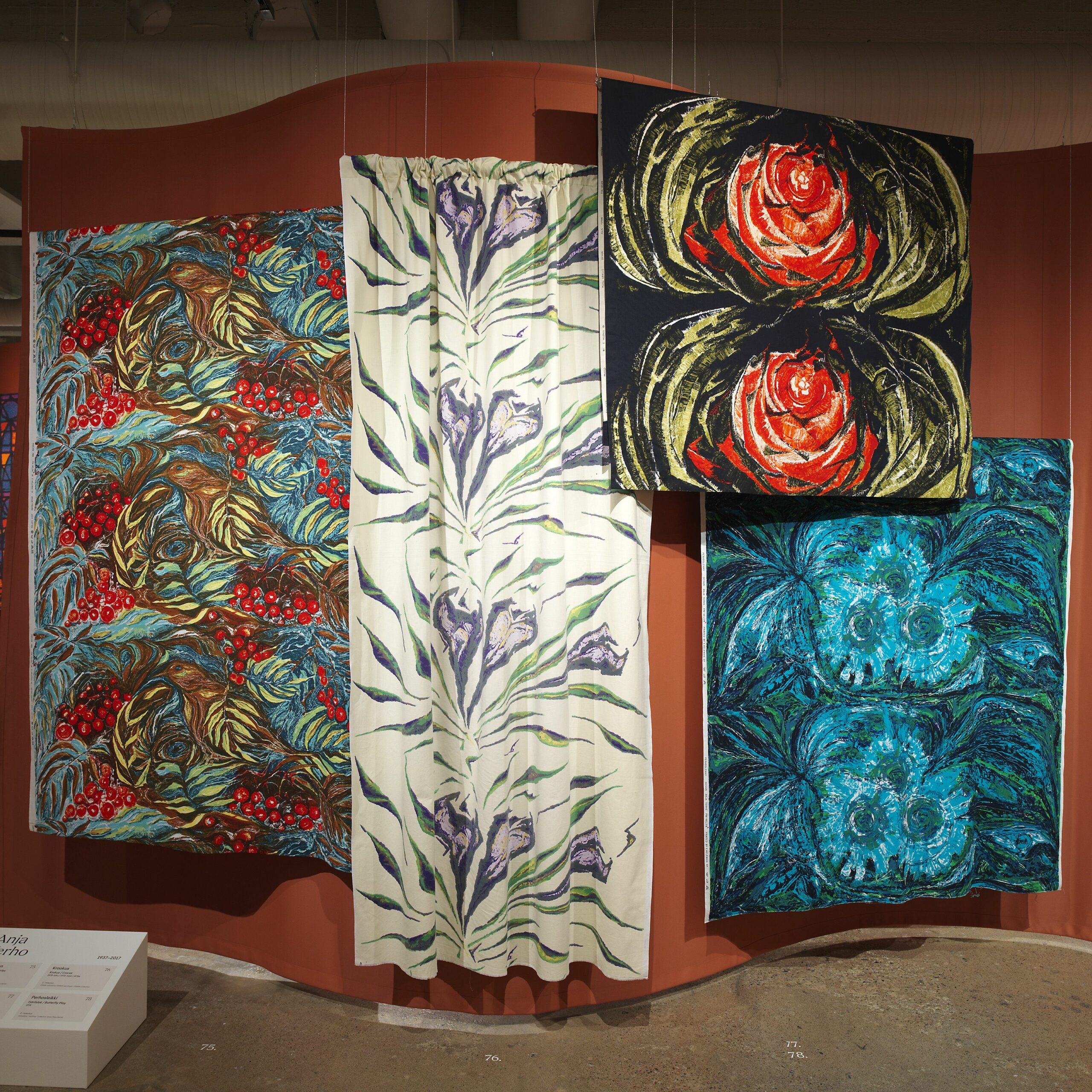
Anja Terho (b. 1937 Kangasala, d. 2017 Tampere)
Self-taught textile artist Anja Terho designed printed fabrics for E. Helenius in the 1960s and 1970s. Terho’s patterns were based on expressive oil paintings, which were repeated on the fabric in layers. She delivered her paintings to the factory, where workers transferred the designs to be printed. Themes often reflected Terho’s personal memories and nature motifs. Alongside fabric design, Terho worked as a secretary and art teacher.
Edward Terzibasiyan
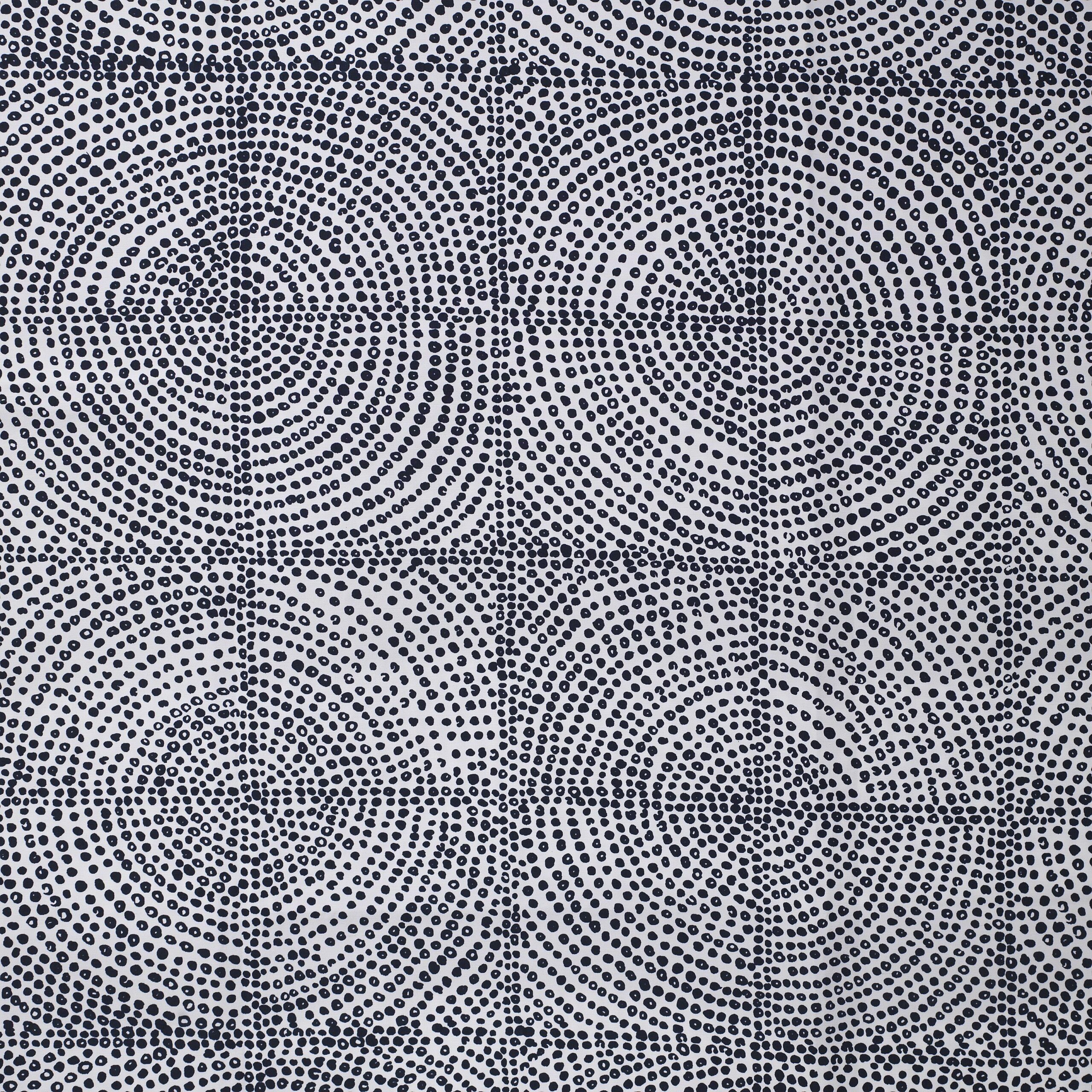
Edward Terzibasiyan (b. 1936 Istanbul, Turkey, d. 2000 Helmond, Netherlands)
The textile artist Edward Terzibasiyan has Armenian roots and came to Finland in 1961, drawn to Finnish nature and traditional textiles. After working at Porin Puuvilla, Terzibasiyan was employed by Tikkurilan Silkki in 1962 and in 1967 was hired as the first textile designer at the Vallilan Silkkitehdas textile factory. His vivid designs often featured meticulous lines and dots creating graphic patterns. In 1970, he moved with his family to the Netherlands but left a lasting impact on Finnish textile design.
Tapio Wirkkala
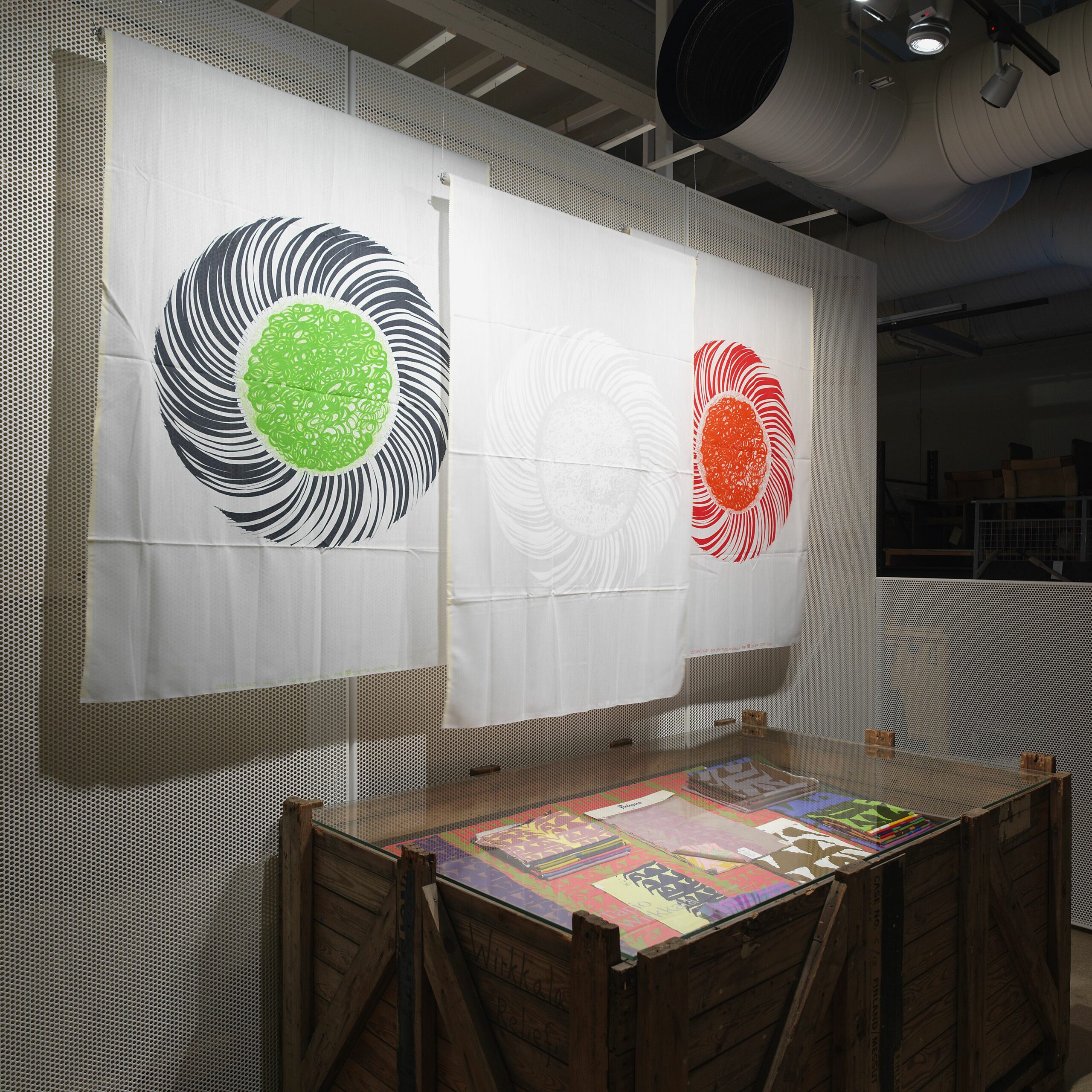
Tapio Wirkkala (b. 1915 Hanko, d. 1985 Helsinki)
Tapio Wirkkala is one of Finland’s most renowned designers, whose work spanned various fields of art and design. His career and work can be explored in depth at the Bryk & Wirkkala Visible Storage. However, Wirkkala’s textile designs have received less attention, and no comprehensive collection of his textile works exists. In the collection of the Tapio Wirkkala Rut Bryk Foundation, two types of printed fabrics from the 1970s are preserved: the Seita designs created for Finlayson in 1970 and the Crazy Sun print designed for the Italian company Socota.
New Landscapes in Textile Design
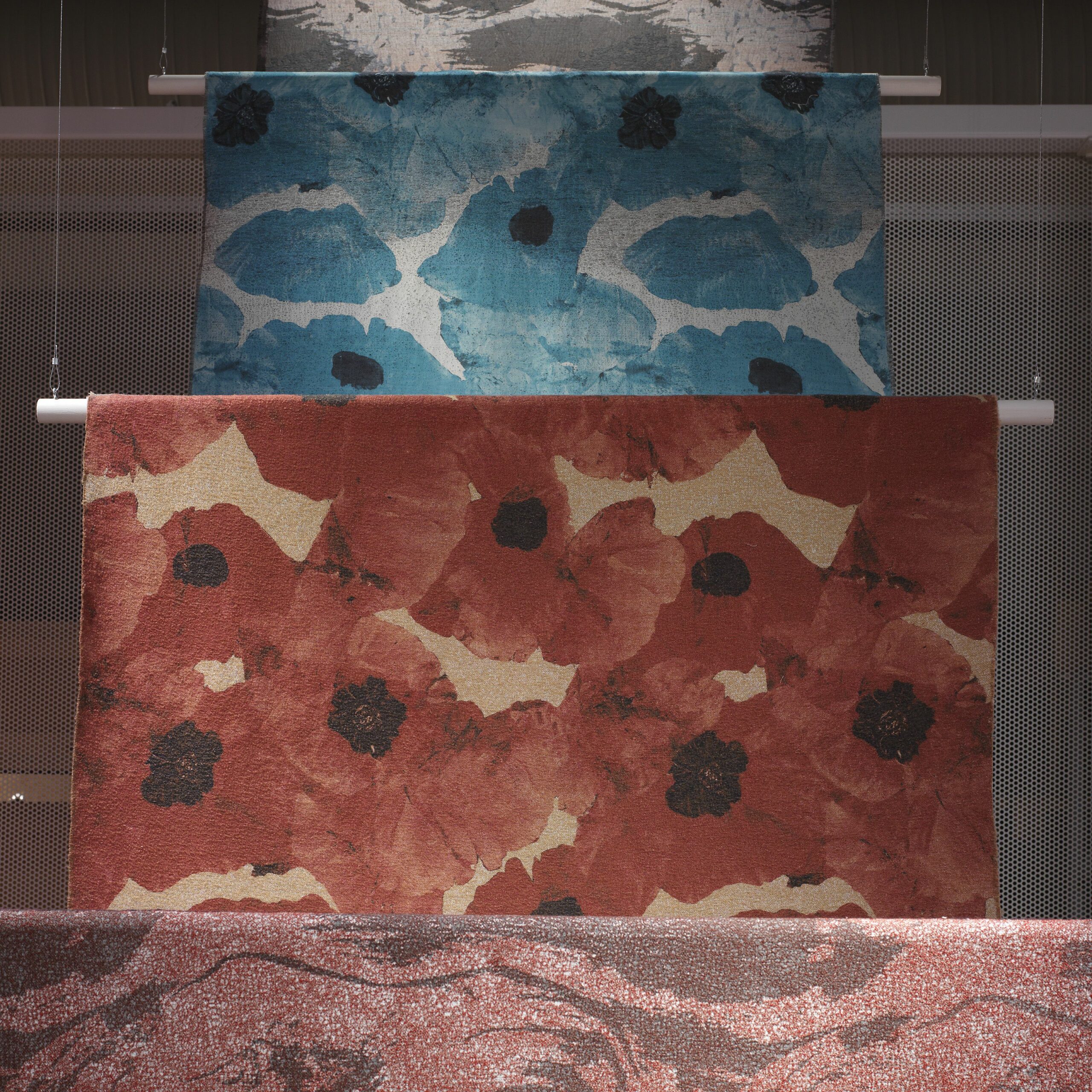
The project team at Aalto University’s School of Arts, Design and Architecture consists of Maarit Salolainen, Maija Fagerlund, Emilia Kuurila, and Anna Semi. Professor of Textile Design Salolainen (b. 1966) has a distinguished career in the international textile industry as a creative director and textile designer. University lecturer Fagerlund (b. 1981) works as a textile designer alongside her teaching responsibilities. Kuurila (b. 1989) and Semi (b. 1991), both also part of the teaching staff at the Department of Design, are fashion and textile designers. The team developed an experimental project aimed at reducing the environmental impact of the textile industry, which piloted combining printing techniques with Jacquard fabric. The project was based on using surplus yarns and utilising digital design.
Project collaborators: Aalto University School of Arts, Design and Architecture, Department of Design and Vanelli Textiles, Türkiye
Content on EMMA Zone
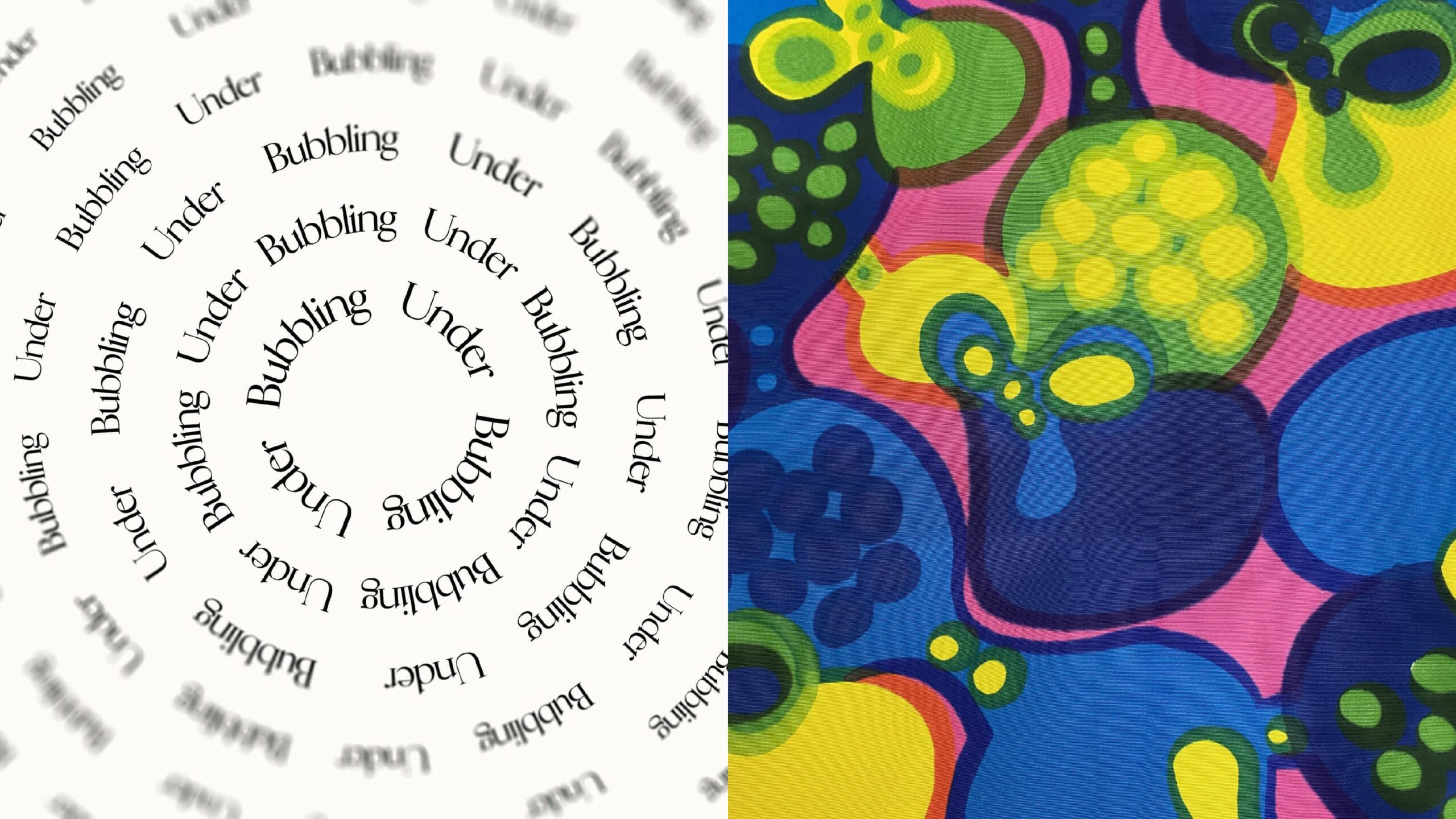
Dive deeper into printed fabrics by reading collector Maria Jernkvist’s article Art On Fabric and watching the documentary Like A Dream – Rut Bryk’s Printed Fabrics on EMMA Zone!
→ www.emmazone.fi ←
EMMA Zone is the digital home of EMMA. The site offers a variety content about art, design and the museum’s work under four categories: Thinking Zone, Behind the Scenes at EMMA, Bubbling Under and Children’s Art Questions.
EMMA Zone – Always open for art!